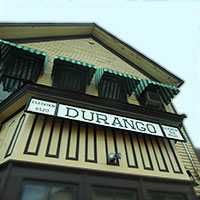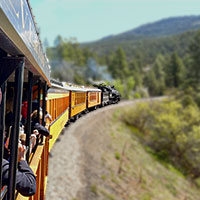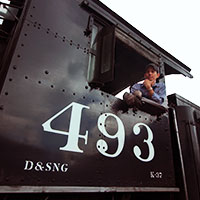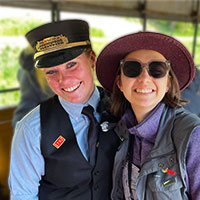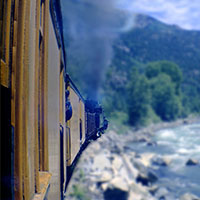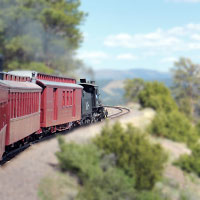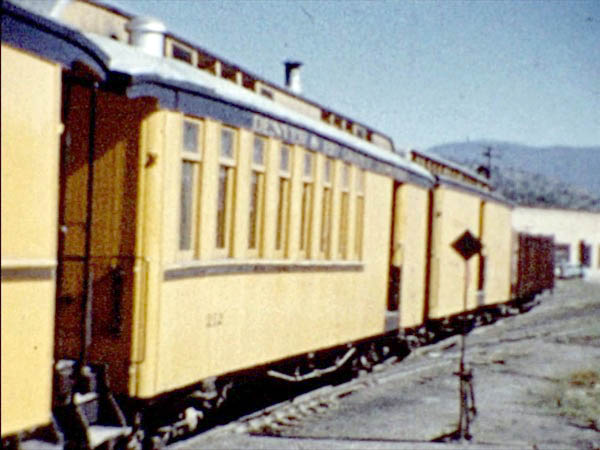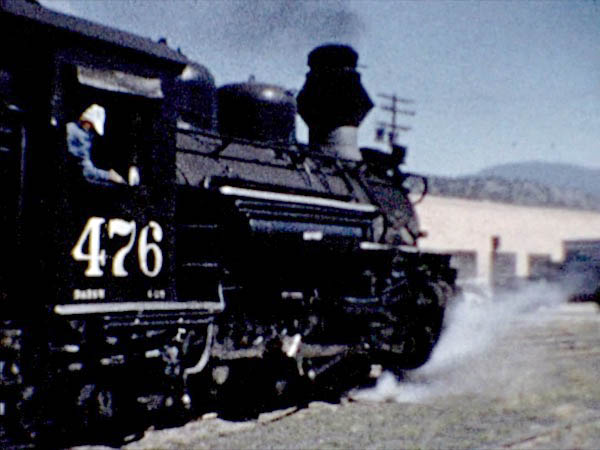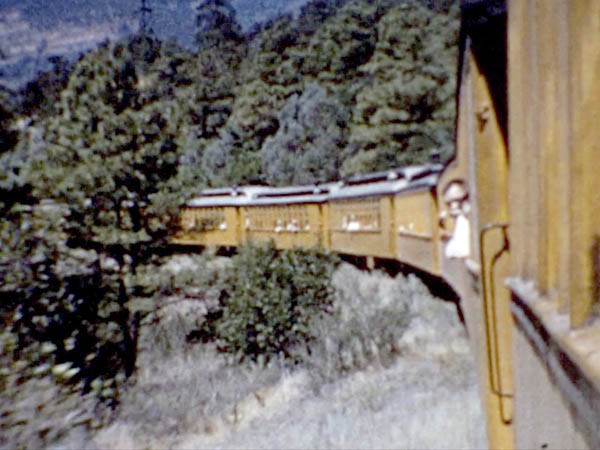
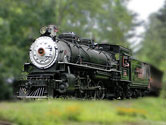






Tourist
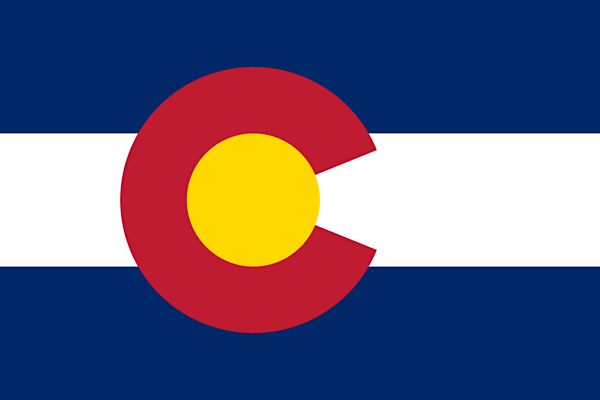


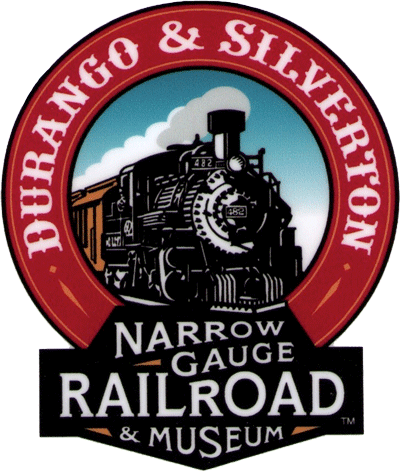 |
Durango & Silverton
|

Needleton, Co / May 2023 / RWH

 he Durango & Silverton Narrow Gauge Railroad is history made up of original equipment, maintained to perfection, operated and kept up by people today using skills long lost to ordinary endeavors. Our history protects and preserves the very human character that made our country great. On our railroad, you will experience Colorado at its best ... wildlife, waterfalls, majestic peaks, all from the view of an 1880s train. You will see places you can get to only by foot or train. You will experience first-hand why the D&SNGRR was voted “One of the World’s Top Ten Most Exciting Train Rides” by the Society of American Travel Writers in 2009. Welcome Aboard!
he Durango & Silverton Narrow Gauge Railroad is history made up of original equipment, maintained to perfection, operated and kept up by people today using skills long lost to ordinary endeavors. Our history protects and preserves the very human character that made our country great. On our railroad, you will experience Colorado at its best ... wildlife, waterfalls, majestic peaks, all from the view of an 1880s train. You will see places you can get to only by foot or train. You will experience first-hand why the D&SNGRR was voted “One of the World’s Top Ten Most Exciting Train Rides” by the Society of American Travel Writers in 2009. Welcome Aboard!

 ubbed "America's Railroad," the venerable Durango & Silverton Narrow Gauge Railroad in southwest Colorado is arguably one of the best-known tourist-hauling railroad operations in the United States, if not the world. Once a branchline in the Denver & Rio Grande Western Railroad's sprawling narrow gauge network, the 45 scenic miles between Durango and Silverton, Colorado, has been continuously operated by steam locomotion since 1881. The route was originally opened to haul silver and gold ore mine in the San Juan Mountains to connections with the larger rail network beyond Durango. It was built north through the Animas River Valley, charting a path along the rushing waterway through rail locations dubbed Trimble, Hermosa, Rockwood, Tacoma, Cascade, Needleton, and Elk Park. Despite the popularity of the Silverton Branch as a tourist attraction in the mid-twentieth century, the D&RGW made several attempts to abandon the unique line — only to rehabilitate it when railroad regulators refused to allow its closure. The line was added to the National Register of Historic Places in 1966 and remained a beloved Colorado attraction for the next decade. By the late 1970s, however, the modern Rio Grande railroad was eager to sell the now-isolated branchline.
ubbed "America's Railroad," the venerable Durango & Silverton Narrow Gauge Railroad in southwest Colorado is arguably one of the best-known tourist-hauling railroad operations in the United States, if not the world. Once a branchline in the Denver & Rio Grande Western Railroad's sprawling narrow gauge network, the 45 scenic miles between Durango and Silverton, Colorado, has been continuously operated by steam locomotion since 1881. The route was originally opened to haul silver and gold ore mine in the San Juan Mountains to connections with the larger rail network beyond Durango. It was built north through the Animas River Valley, charting a path along the rushing waterway through rail locations dubbed Trimble, Hermosa, Rockwood, Tacoma, Cascade, Needleton, and Elk Park. Despite the popularity of the Silverton Branch as a tourist attraction in the mid-twentieth century, the D&RGW made several attempts to abandon the unique line — only to rehabilitate it when railroad regulators refused to allow its closure. The line was added to the National Register of Historic Places in 1966 and remained a beloved Colorado attraction for the next decade. By the late 1970s, however, the modern Rio Grande railroad was eager to sell the now-isolated branchline.
 Charles Bradshaw, a Florida citrus grower and business investor, responded to the call for a buyer and offered the mainline railroad the opportunity to divest itself of its tourist operation. On October 5, 1980, The Silverton made its last run under Rio Grande ownership, bringing to a close some 110 years of narrow-gauge operations by a major American carrier. Included in the sale of the right-of-way between Durango and Silverton were various K-class steam locomotives, vintage rolling stock, and other narrow gauge equipment. Under Brandshaw's management, the operation expanded its foothold as a tourist operation in the San Juan region. Several steam engines were rebuilt, the 19th century passenger cars were rehabilitated and new ones constructed, the historic Durango depot was renovated, the Silverton depot was purchased, and a new roundhouse was constructed in 1990 after the original 1881 structure was destroyed in a fire that also damaged several steamers.
Charles Bradshaw, a Florida citrus grower and business investor, responded to the call for a buyer and offered the mainline railroad the opportunity to divest itself of its tourist operation. On October 5, 1980, The Silverton made its last run under Rio Grande ownership, bringing to a close some 110 years of narrow-gauge operations by a major American carrier. Included in the sale of the right-of-way between Durango and Silverton were various K-class steam locomotives, vintage rolling stock, and other narrow gauge equipment. Under Brandshaw's management, the operation expanded its foothold as a tourist operation in the San Juan region. Several steam engines were rebuilt, the 19th century passenger cars were rehabilitated and new ones constructed, the historic Durango depot was renovated, the Silverton depot was purchased, and a new roundhouse was constructed in 1990 after the original 1881 structure was destroyed in a fire that also damaged several steamers.
In 1997, Bradshaw sold the successful Durango & Silverton Narrow Gauge Railroad to a new owner, who a year later sold it again to American Heritage Railways — then based in Florida. Since then, with Allen Harper as CEO, AHR headquarters have moved to Durango, and the company also owns and operates the Great Smoky Mountains Railroad in North Carolina. As of 2023, the D&SNGR operates 8 coal or oil-fired steam locomotives, 9 diesel-electric locomotives, nearly 50 pieces of vintage passenger equipment (some of which date back to the 1880s), and various freight and maintenance rolling stock. Trains operate year-round: to Silverton and back in the warmer months; to Cascade Wye and back in the winter months.

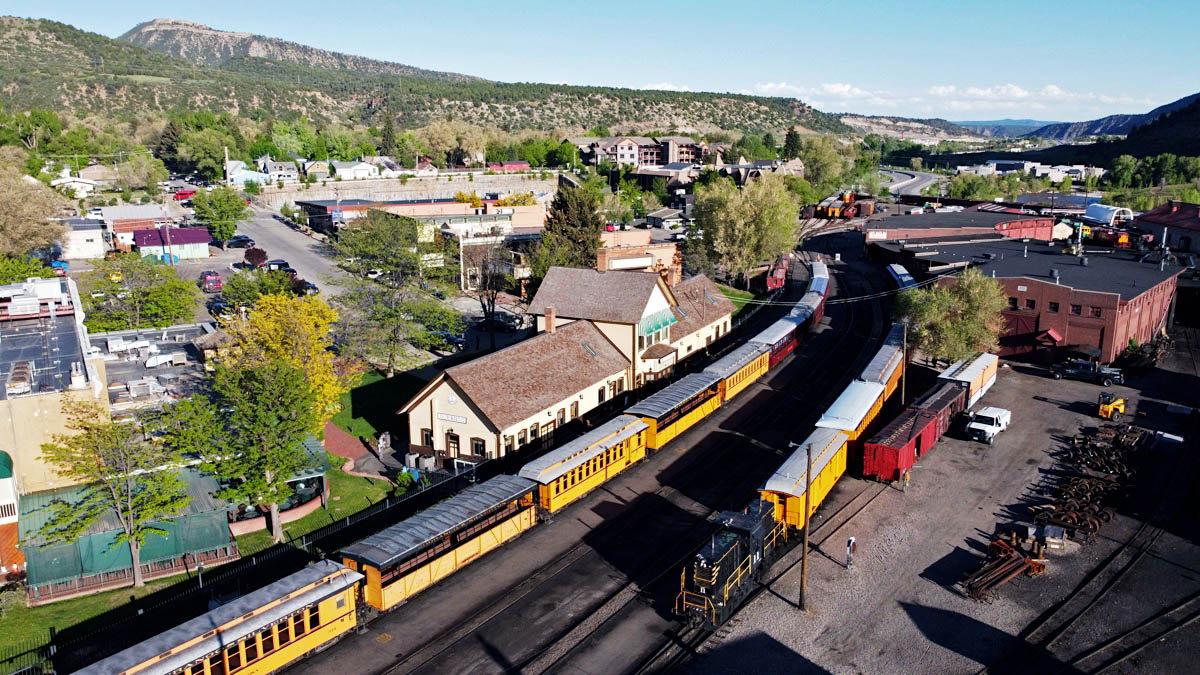
Durango, Co / May 2023 / RWH
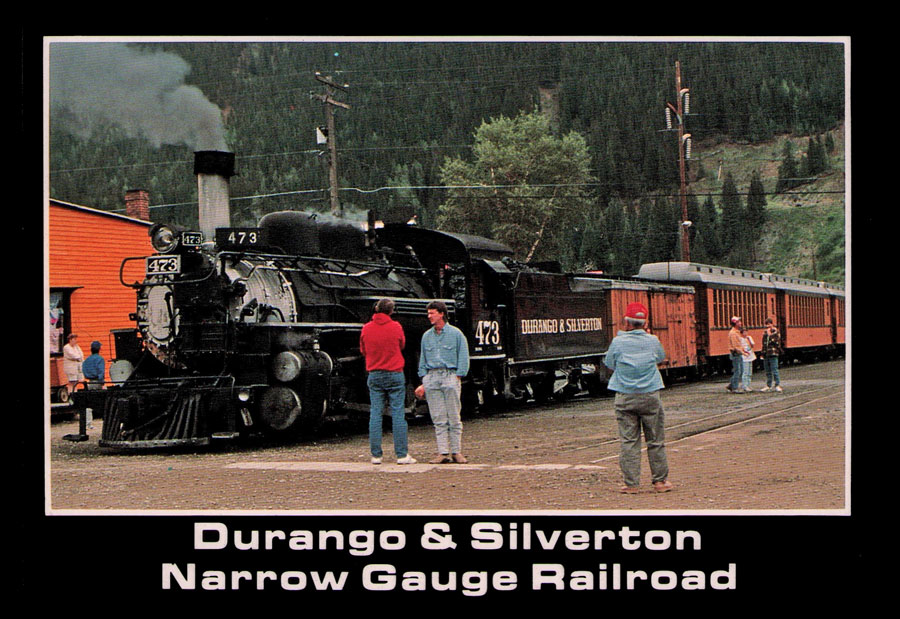
postcard / collection
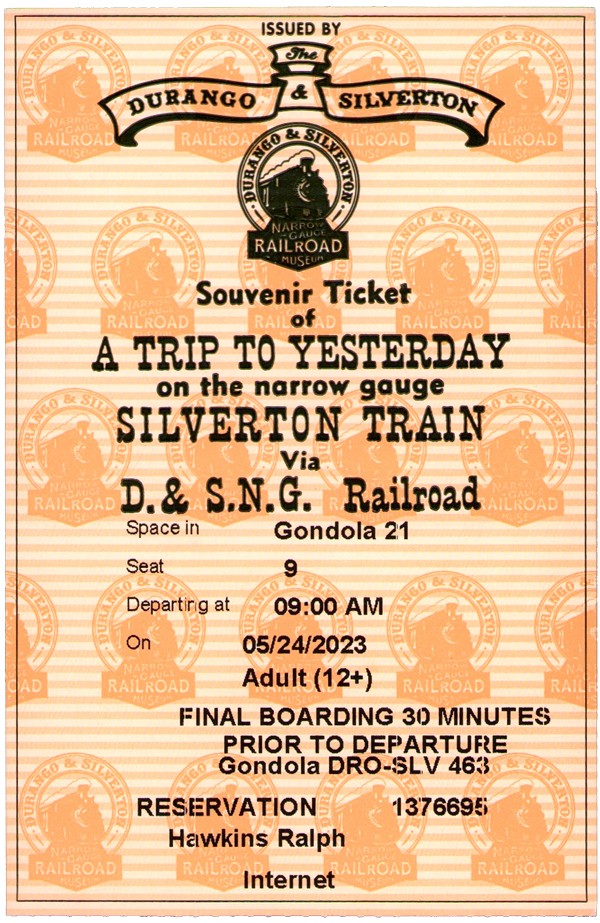


 or 140 years, the Durango & Silverton Narrow Gauge Railroad has been transporting passengers through the remote, scenic wilderness and high mountain landscape of the San Juan National Forest.
A National Historic Landmark and one of the most popular heritage railroads in North America, this train offers a unique, affordable, family-friendly travel experience that combines Colorado’s colorful pioneering and mining histories with unparalleled backcountry beauty.
or 140 years, the Durango & Silverton Narrow Gauge Railroad has been transporting passengers through the remote, scenic wilderness and high mountain landscape of the San Juan National Forest.
A National Historic Landmark and one of the most popular heritage railroads in North America, this train offers a unique, affordable, family-friendly travel experience that combines Colorado’s colorful pioneering and mining histories with unparalleled backcountry beauty.
Listen to the steel wheels sing as you venture alongside the rushing waters of the Animas River and amid the towering peaks of the San Juan Mountains to beautiful Cascade Canyon or the historic mining town of Silverton. Operating year-round, the Durango Train is a wonderful way to witness the changing of the seasons, learn about the rich history of Durango and the state’s railroading industry, and experience the dramatic alpine landscapes of southwest Colorado.
During all four seasons, the train travels to Cascade Canyon which lies deep in the wilderness of the San Juan Mountains. From early May through October, the railroad transports passengers to and from Silverton, a visit that’s like stepping back in time to the days of the Wild West – and when gold and silver mining in the area was at its zenith.
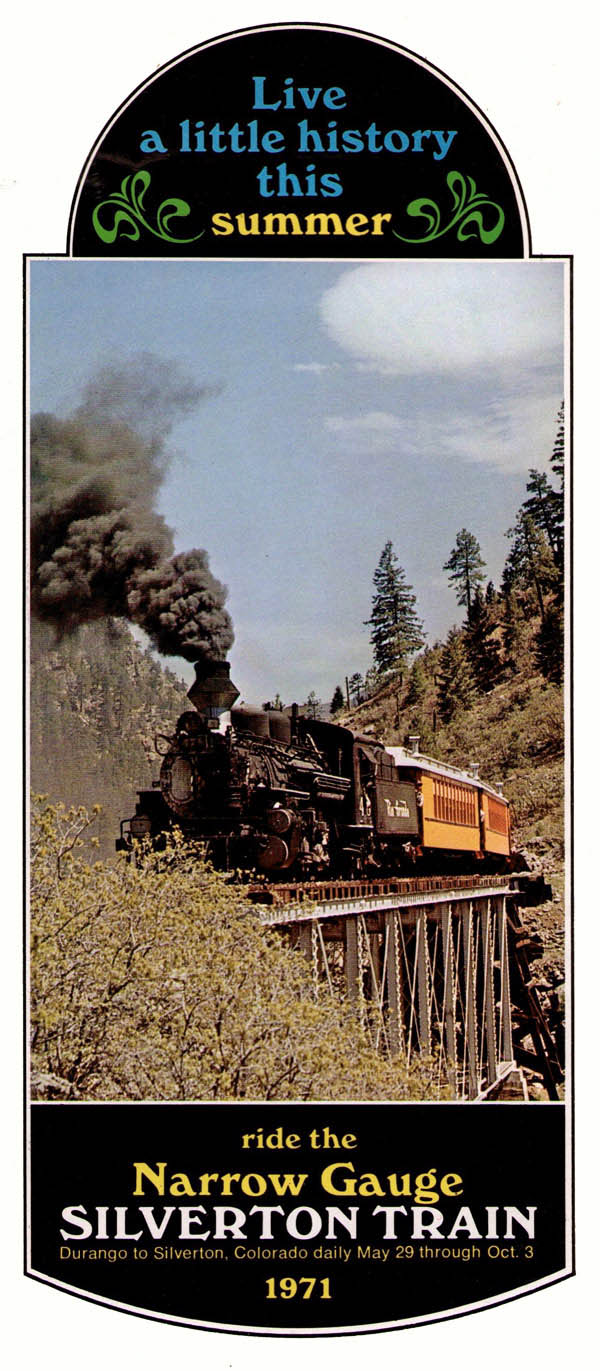
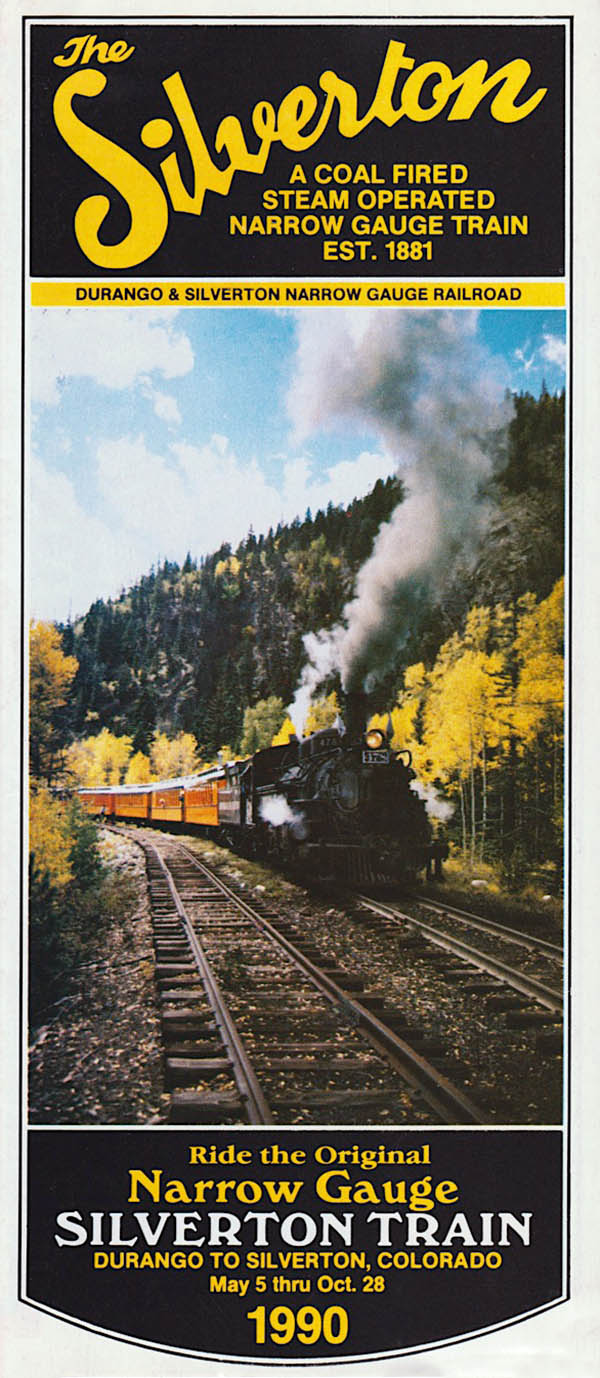
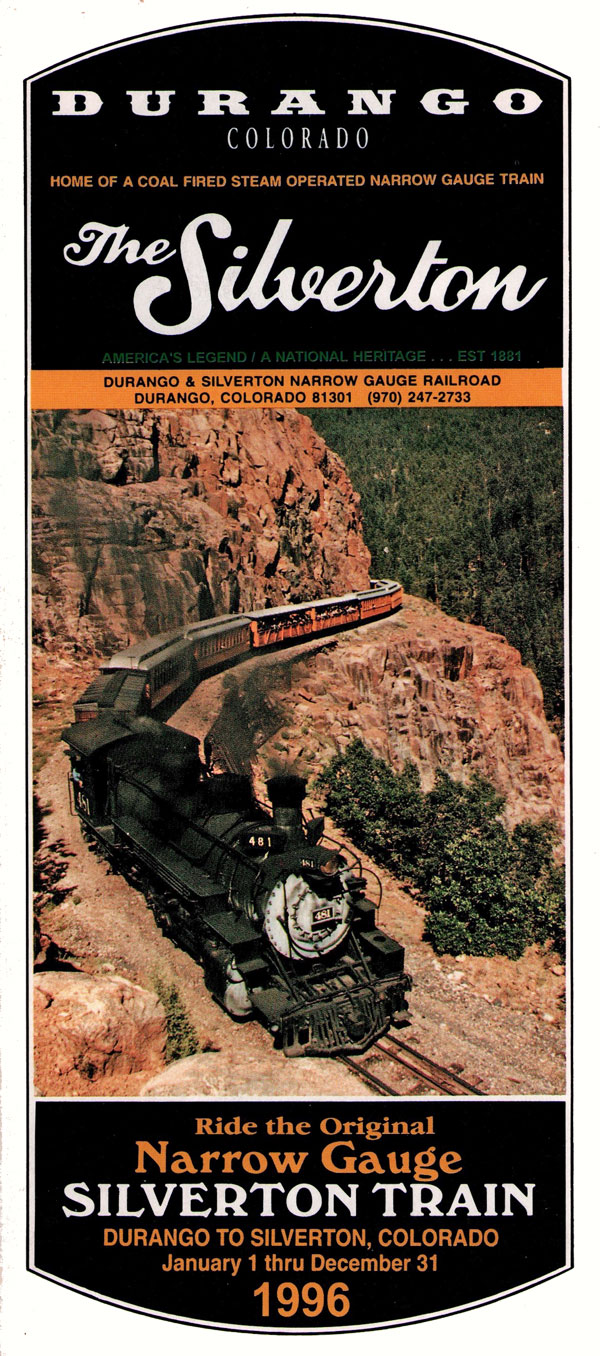
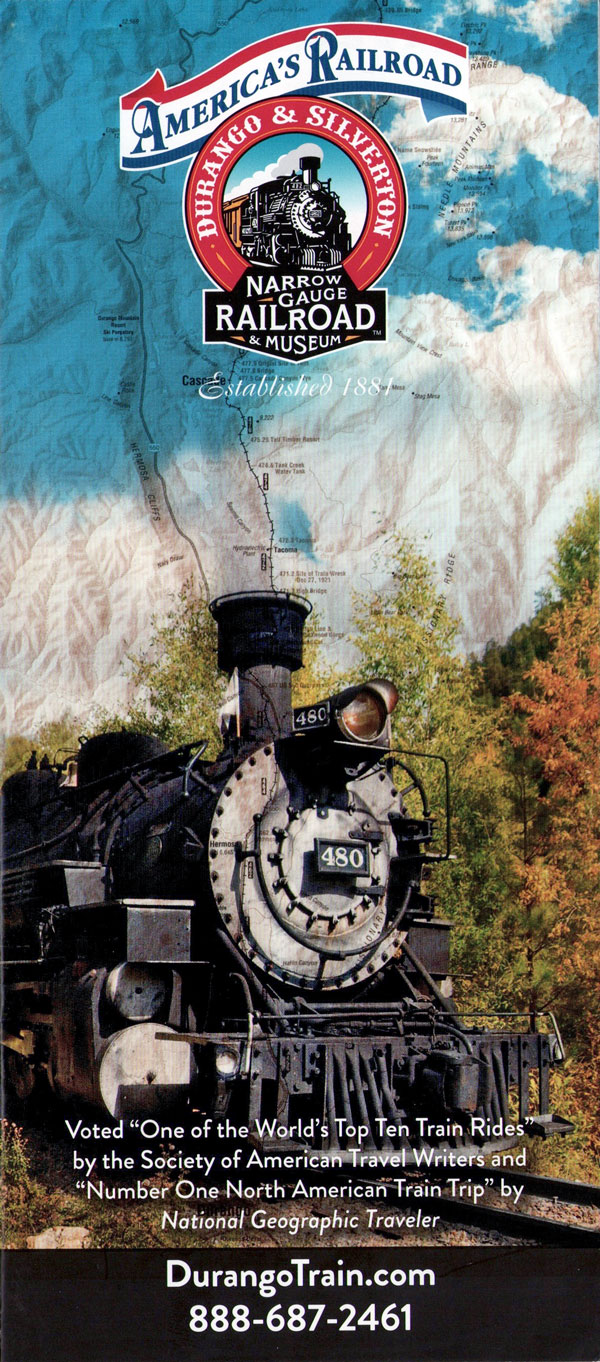
brochures / collection

collection
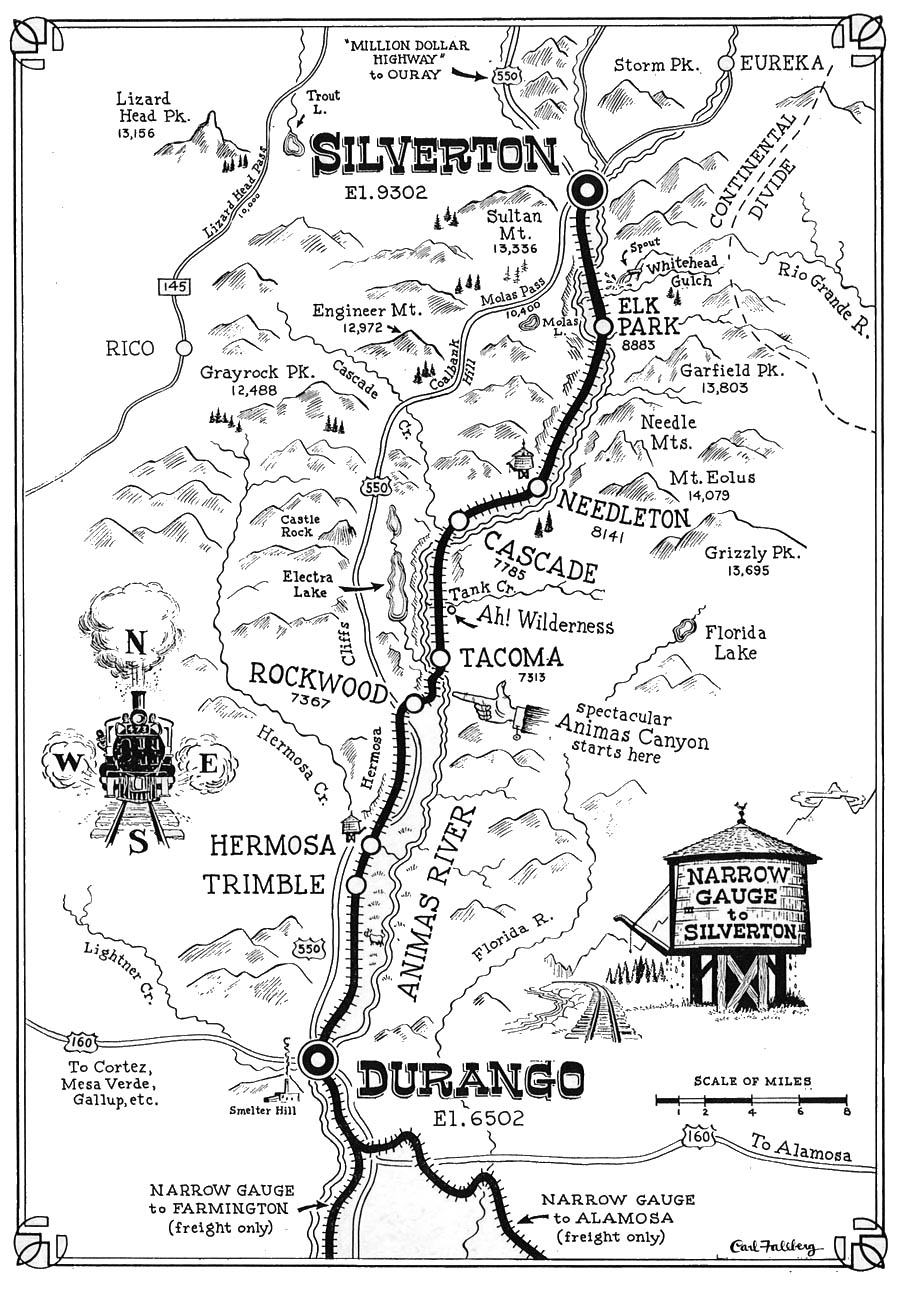
from Narrow Gauge to Silverton / collection
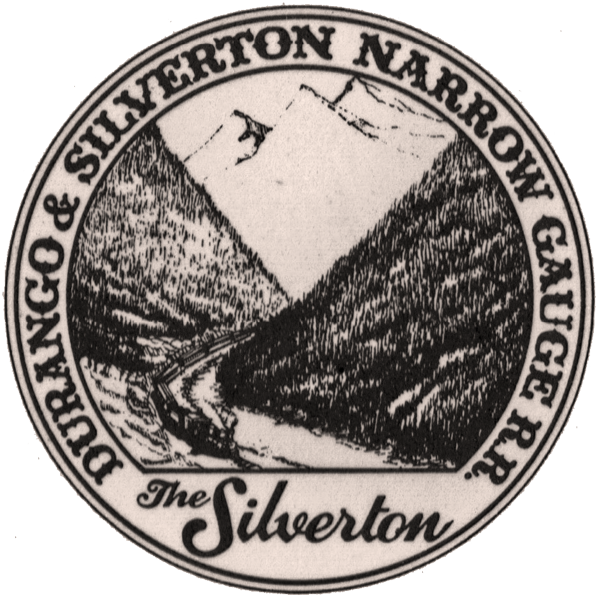
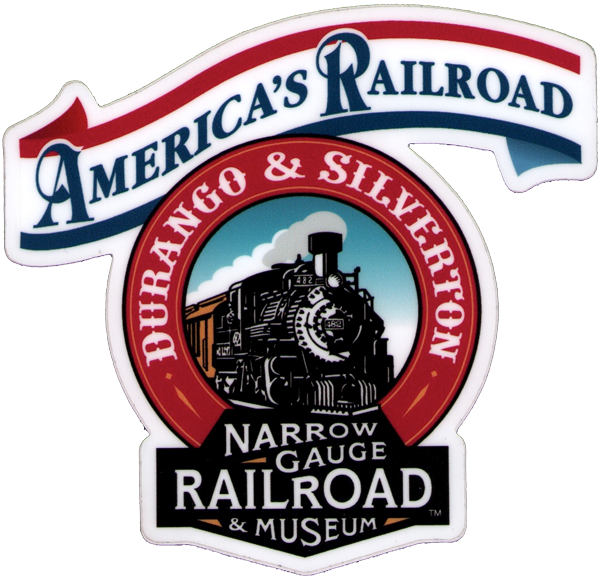
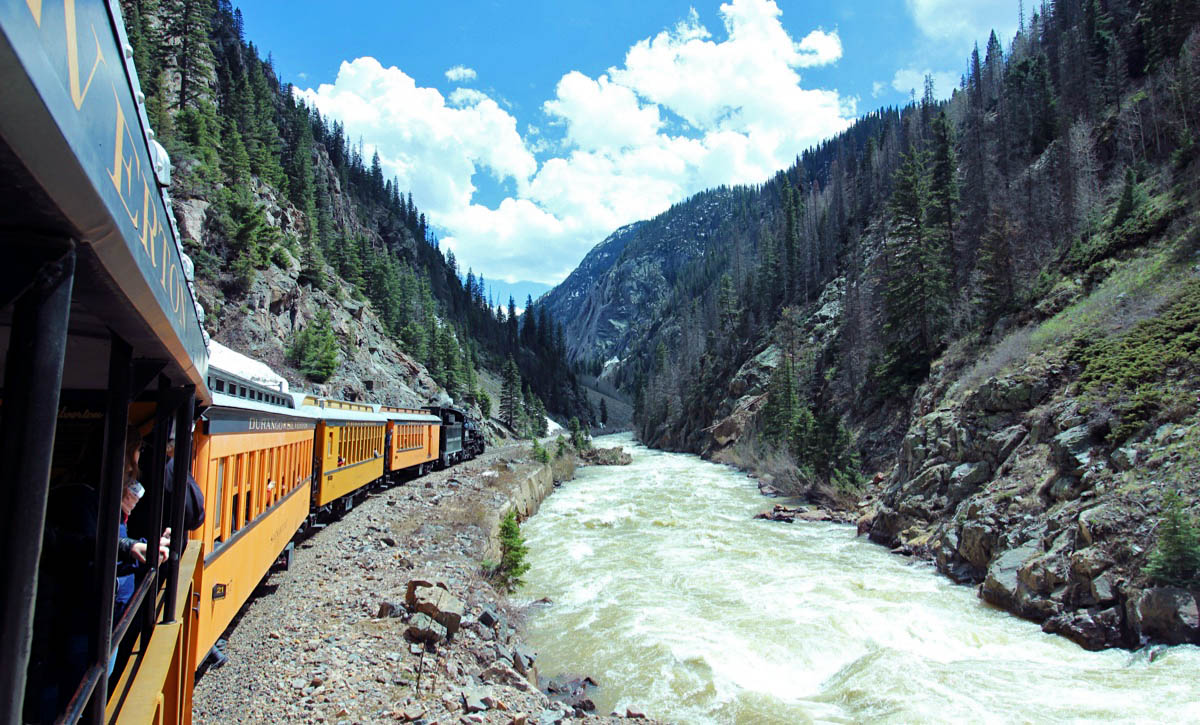
Elk Park, Co / May 2023 / RWH
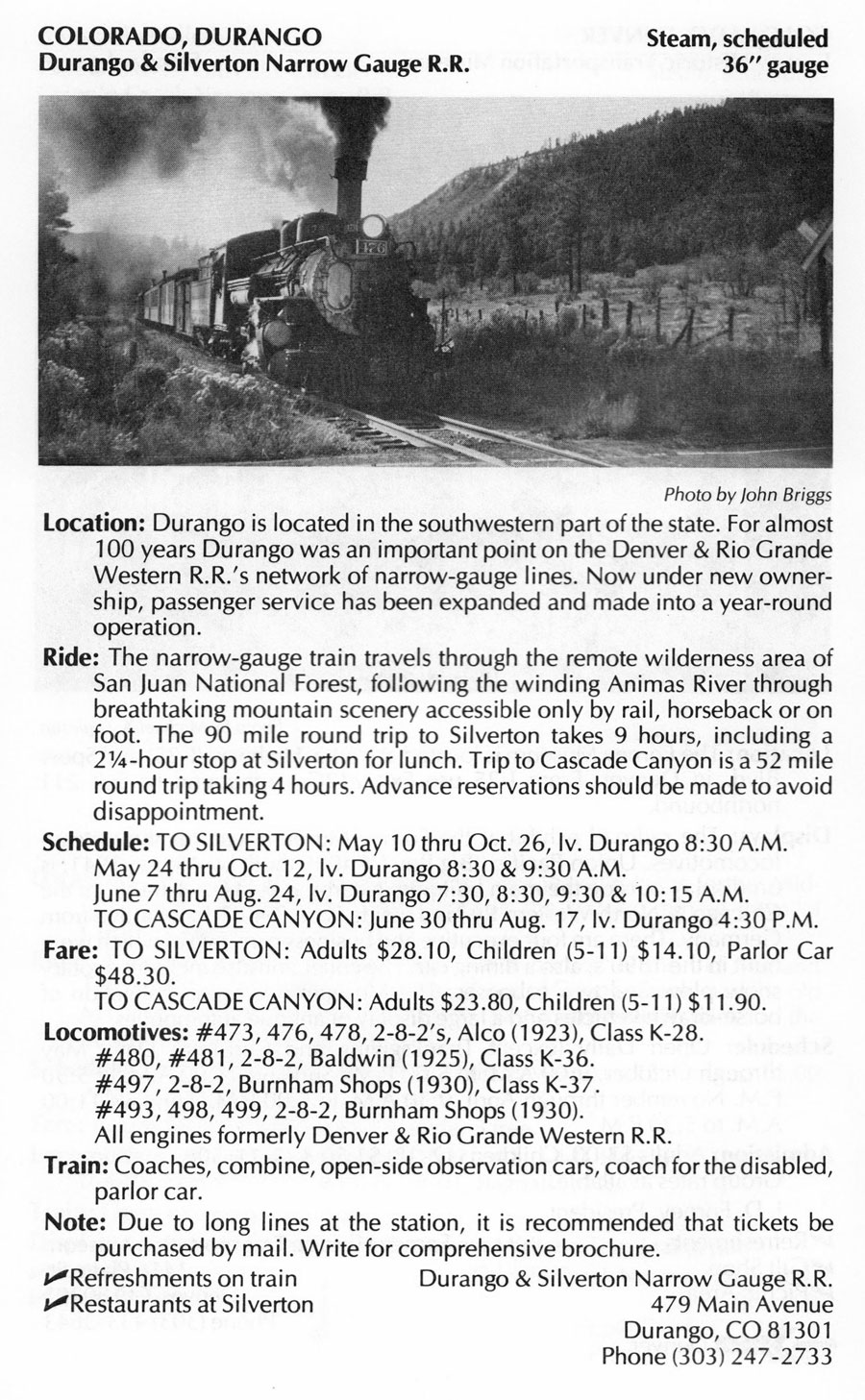
1986 tourist train guide ad / collection

2019 tourist train guide ad / collection
postcard / collection

 ot wanting to keep running an orphaned line far from its other operations, in the late 1970s the Denver & Rio Grande Western started a serious search for a buyer. The company found the Florida businessman Charles Bradshaw Jr., who had the money, ability, and interest to acquire the Silverton line and maintain it at a high standard. In March 1981 the sale was announced during Durango’s centennial celebration. The line took on a new name, the Durango & Silverton Narrow Gauge Railroad, and added more trains in the summer as well as a few trains in the winter.
ot wanting to keep running an orphaned line far from its other operations, in the late 1970s the Denver & Rio Grande Western started a serious search for a buyer. The company found the Florida businessman Charles Bradshaw Jr., who had the money, ability, and interest to acquire the Silverton line and maintain it at a high standard. In March 1981 the sale was announced during Durango’s centennial celebration. The line took on a new name, the Durango & Silverton Narrow Gauge Railroad, and added more trains in the summer as well as a few trains in the winter.
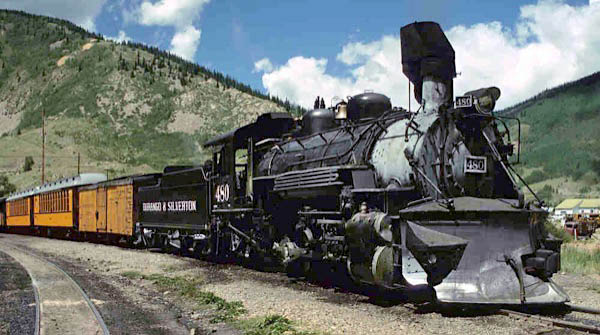 The Durango & Silverton Narrow Gauge has proved especially popular among railroad enthusiasts. The line is one of the only surviving narrow gauge routes in the US, and it is prized for keeping that piece of American railroading history alive. The Durango turntable, which dates to 1923, is among the oldest known narrow gauge turntables in the world. The Durango roundhouse, built in 1990 after a fire destroyed the original, is the only known narrow gauge roundhouse to be constructed since 1906.
The Durango & Silverton Narrow Gauge has proved especially popular among railroad enthusiasts. The line is one of the only surviving narrow gauge routes in the US, and it is prized for keeping that piece of American railroading history alive. The Durango turntable, which dates to 1923, is among the oldest known narrow gauge turntables in the world. The Durango roundhouse, built in 1990 after a fire destroyed the original, is the only known narrow gauge roundhouse to be constructed since 1906.
After Silverton’s last remaining mine, the Sunnyside, closed in the early 1990s, the town became more dependent on tourism than ever before. Ironically, the train became just as important to the town’s economic survival as when it first arrived in 1882, except now it carried tourists instead of carting away ore.
In 1997 Bradshaw sold the Durango & Silverton Narrow Gauge to a Florida-based entertainment-rail company called First American Railways. First American’s ownership was rocky from the start, with rate increases and other changes provoking fear and distrust in Durango and Silverton. After one year, First American sold the Durango & Silverton line to real estate developer and railroad enthusiast Allen Harper. Harper’s company, American Heritage Railways, continues to operate the railroad today.
Still one of southwest Colorado’s major tourist attractions, the Durango & Silverton Narrow Gauge is often considered among the most scenic train rides in the country and even the world. It draws hundreds of thousands of passengers per year. Because of the railroad’s booming tourist business, more daily trains depart Durango today than at the height of the mining boom a century ago.
Scrapbooks

See also these related scrapbooks:
- Denver & Rio Grande Western Railroad scrapbook in Mainlines
- Rio Grande Southern Railroad scrapbook in Shortlines
- Great Smoky Mountains Railroad scrapbook in Preservation
- Colorado Railroad Museum scrapbook in Preservation
 The Silverton
The Silverton

 fter World War II, the once enormous narrow gauge footprint of the Denver & Rio Grande Western Railroad in Colorado began to shrink as passenger and freight revenues declined along the 36" gauge San Juan extension, from Alamosa west to Durango. The associated Silverton Branch — between Durango and Silverton — also suffered, as mining interests dried up, freight traffic moved to highways, and snow slides and floods challenged the remote right of way.
fter World War II, the once enormous narrow gauge footprint of the Denver & Rio Grande Western Railroad in Colorado began to shrink as passenger and freight revenues declined along the 36" gauge San Juan extension, from Alamosa west to Durango. The associated Silverton Branch — between Durango and Silverton — also suffered, as mining interests dried up, freight traffic moved to highways, and snow slides and floods challenged the remote right of way.
The Silverton Branch would surely have been abandoned, where it not for its scenic beauty and the rise of domestic tourism in the region in the years following the War. The line received national exposure following the filming of several movies on location, and in response to public interest in 1947 the railroad launched The Silverton — a summer-only daily passenger service between Durango and its namesake destination. The modest effort to attract tourist riders proved successful, and to cope with the continued loss of freight revenue the daily passenger run was for many years operated as a mixed train.
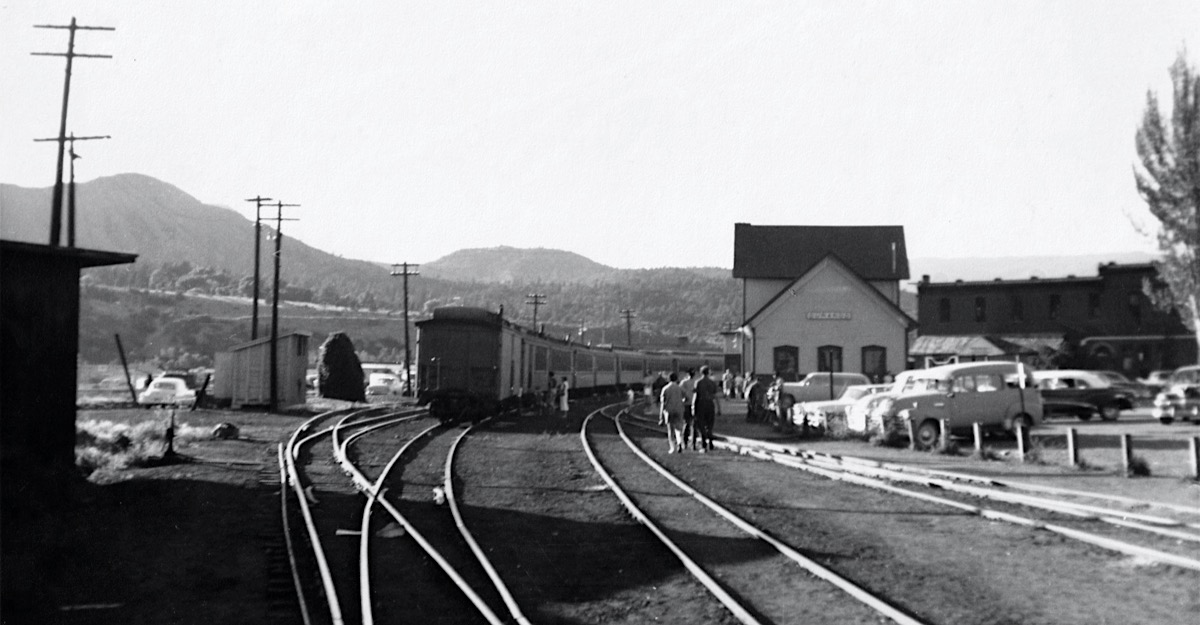 By the 1960s, the modern Denver & Rio Grande Western no longer wanted to operate the remote Silverton line or its slim gauge tourist trains, and thus petitioned the Interstate Commerce Commission for abandonment. The petition was denied, because the route was determined to be so important for regional tourist patronage. As a result of the ruling, the mainline railroad reluctantly made investments in the branchline, its locomotives and rolling stock, and the Durango depot. D&RGW operated The Silverton as a dedicated steam-powered narrow gauge tourist-hauler throughout the 1970s. However, the line was sold in 1979 to Charles Bradshaw, a monied Florida citrus grower, thus ending the Denver-based railroad's century-long 36-inch presence in the San Juan mountains.
By the 1960s, the modern Denver & Rio Grande Western no longer wanted to operate the remote Silverton line or its slim gauge tourist trains, and thus petitioned the Interstate Commerce Commission for abandonment. The petition was denied, because the route was determined to be so important for regional tourist patronage. As a result of the ruling, the mainline railroad reluctantly made investments in the branchline, its locomotives and rolling stock, and the Durango depot. D&RGW operated The Silverton as a dedicated steam-powered narrow gauge tourist-hauler throughout the 1970s. However, the line was sold in 1979 to Charles Bradshaw, a monied Florida citrus grower, thus ending the Denver-based railroad's century-long 36-inch presence in the San Juan mountains.
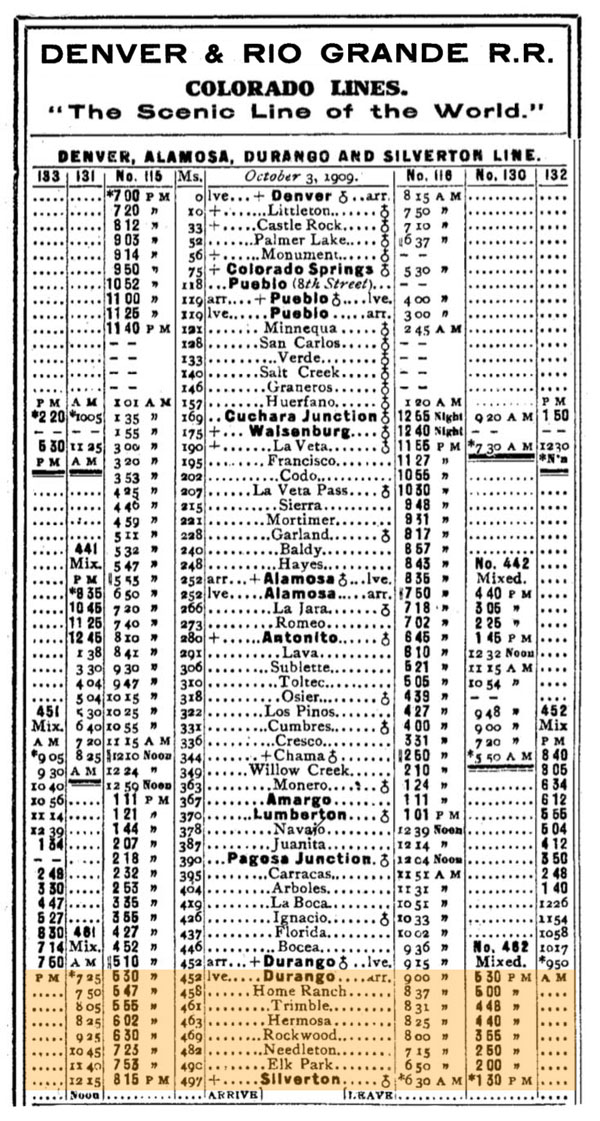
1910 Official Guide ad / collection
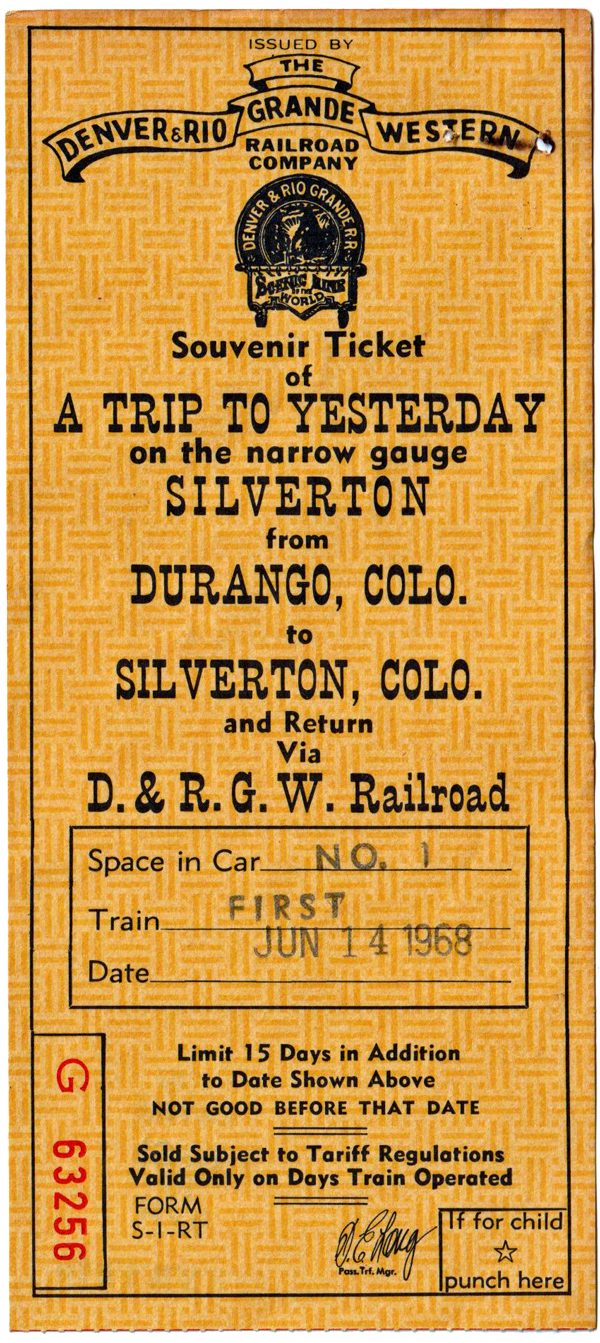
collection
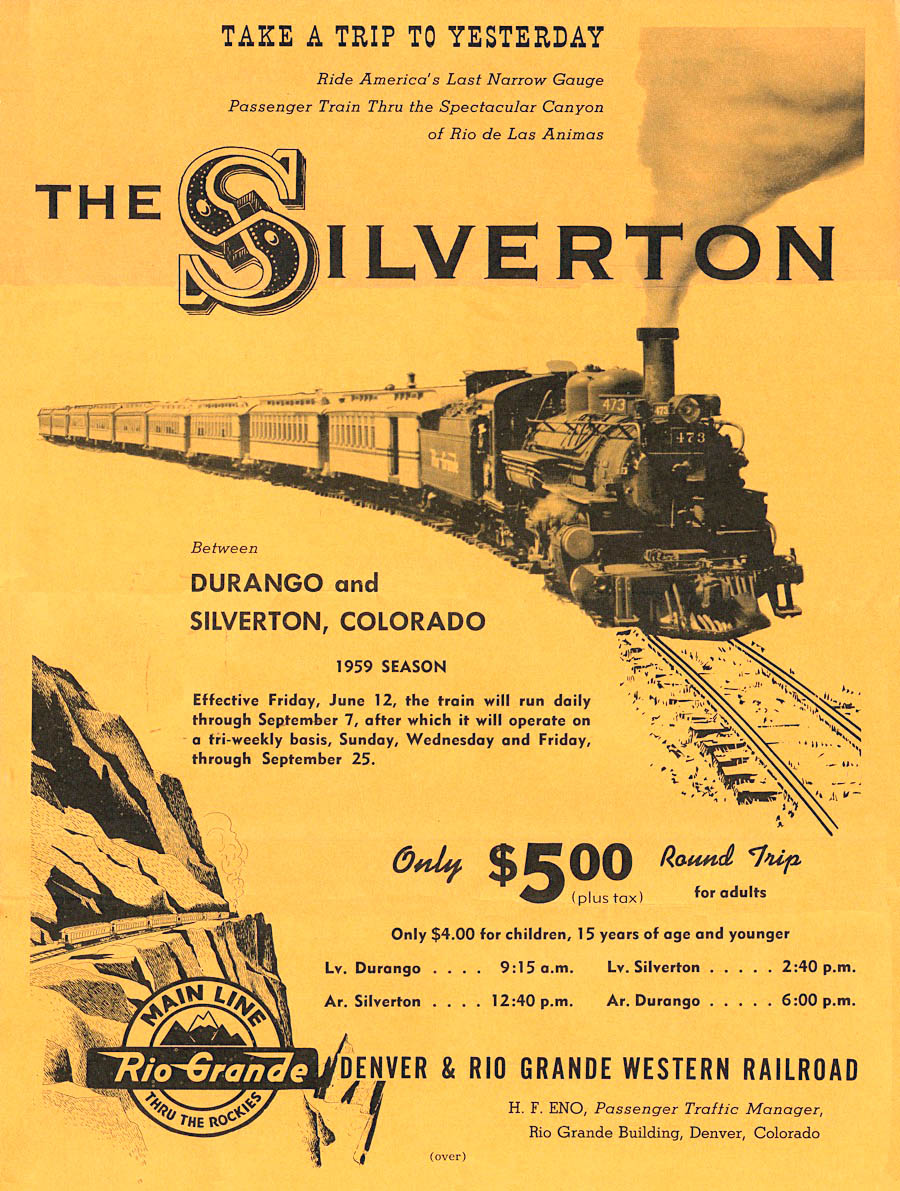
collection
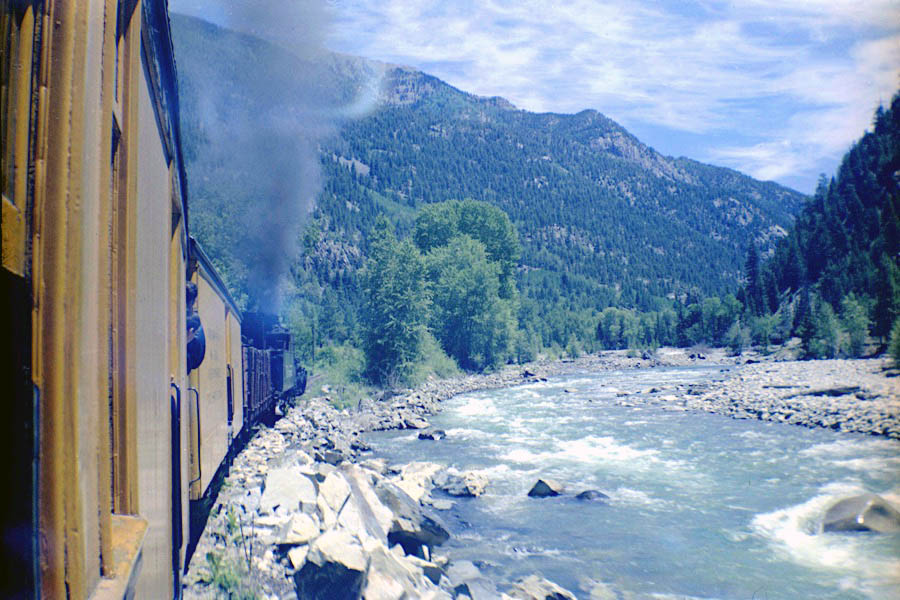
Jun 1959 / JCH
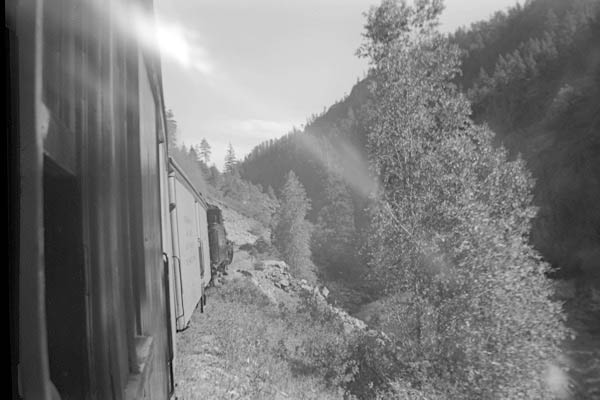
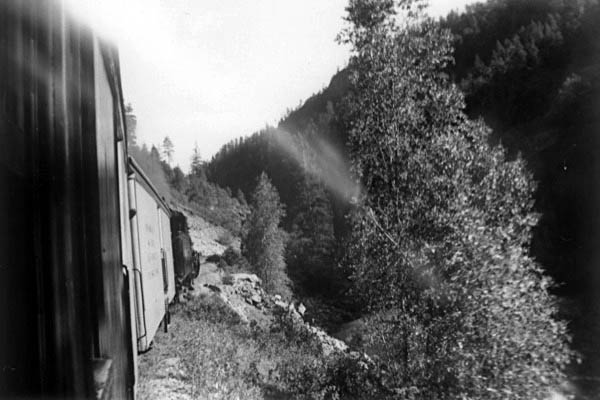
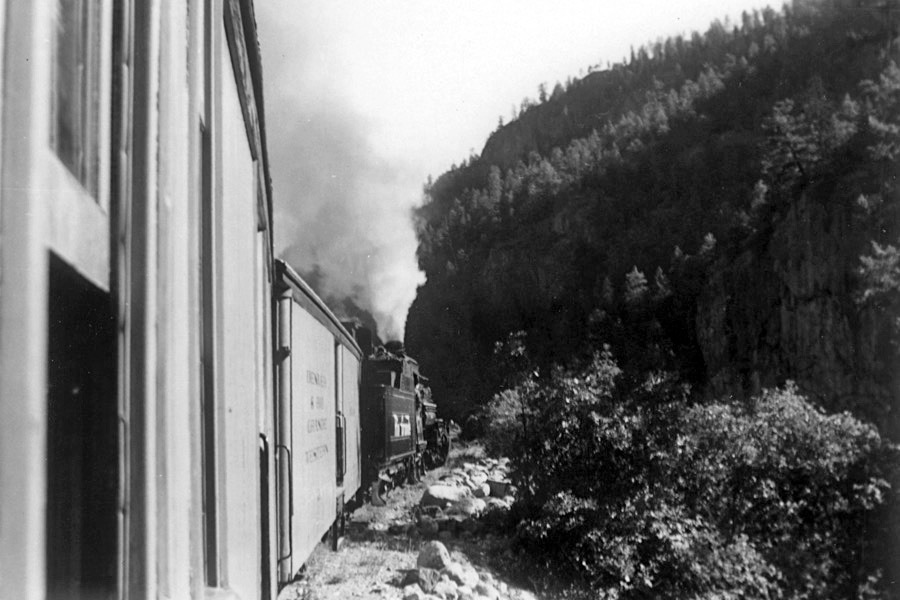
Jun 1959 / JCH
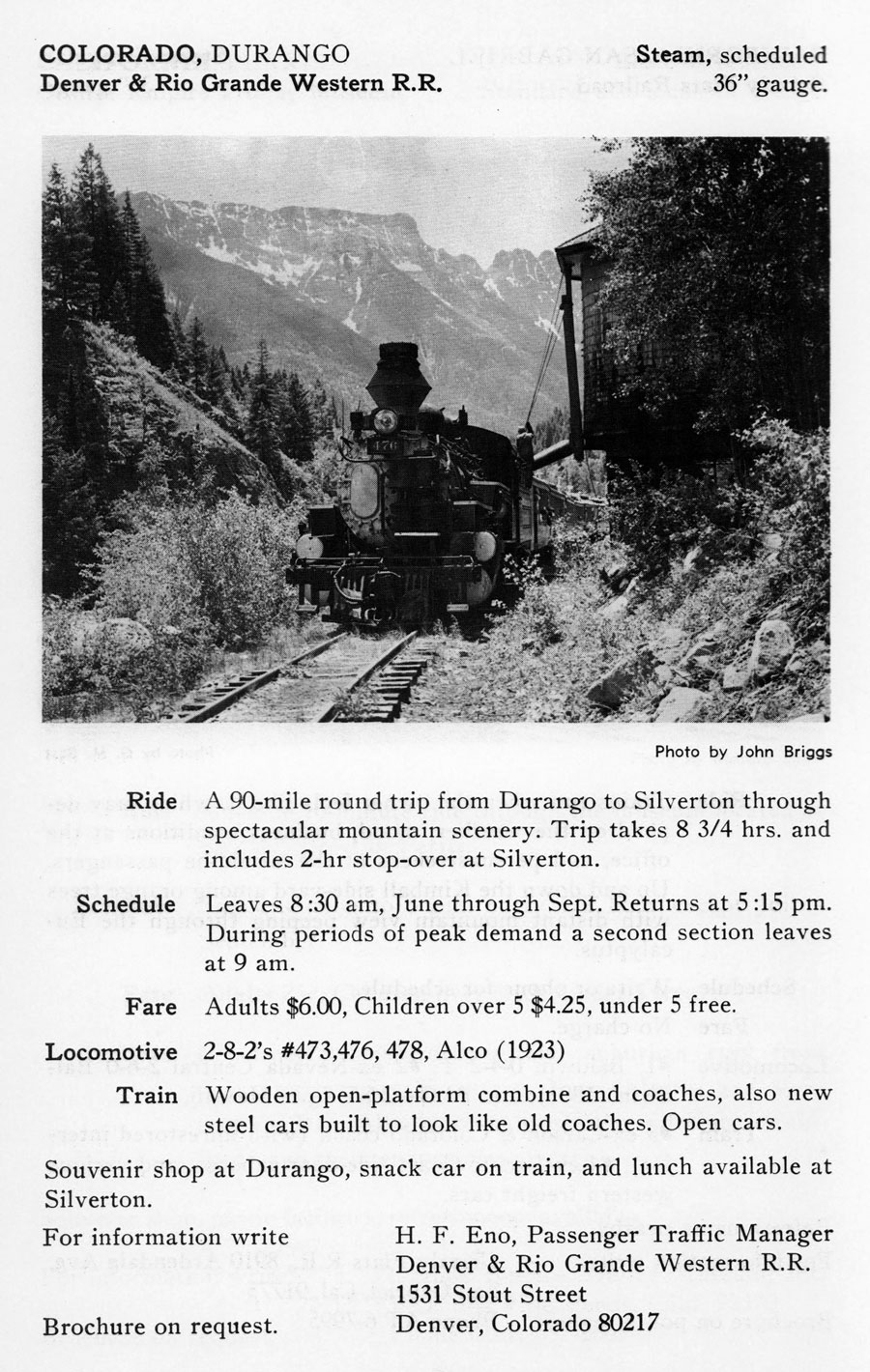
1966 tourist train guide ad / collection
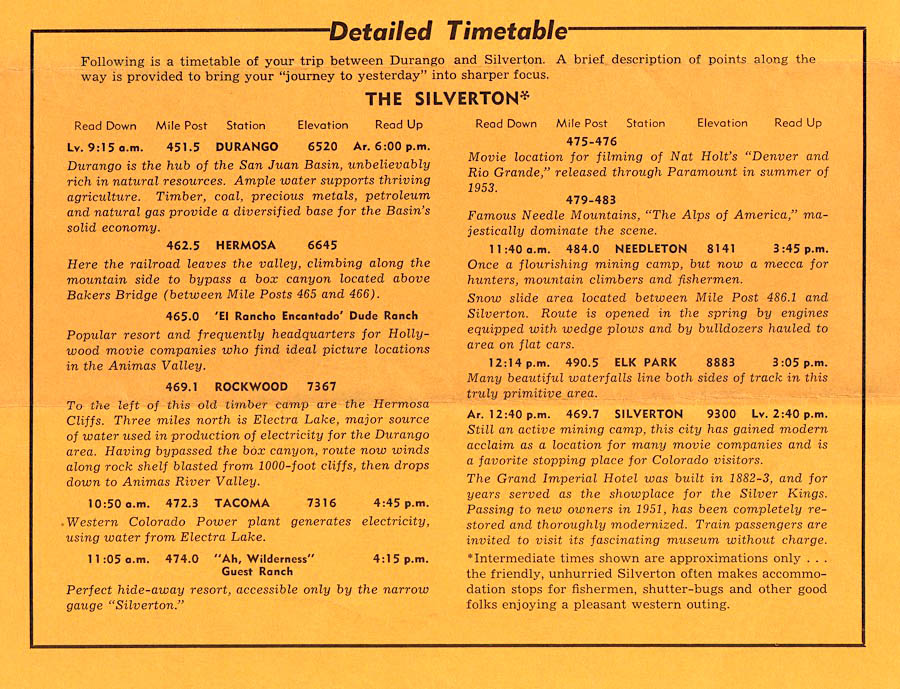
collection
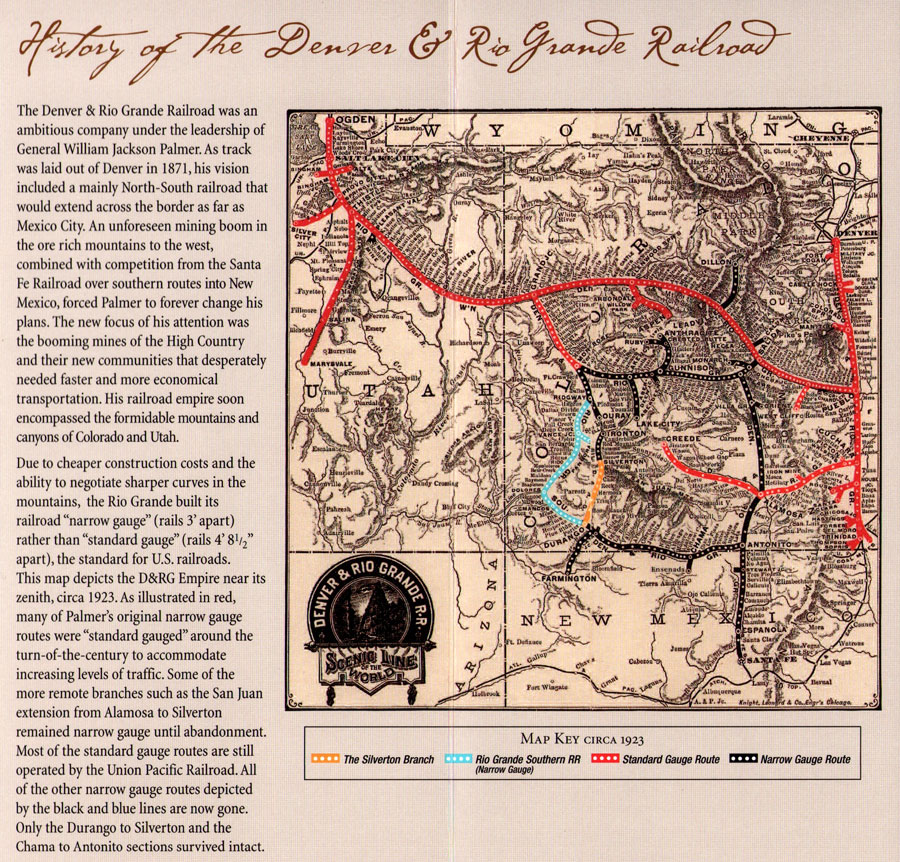
brochure / collection
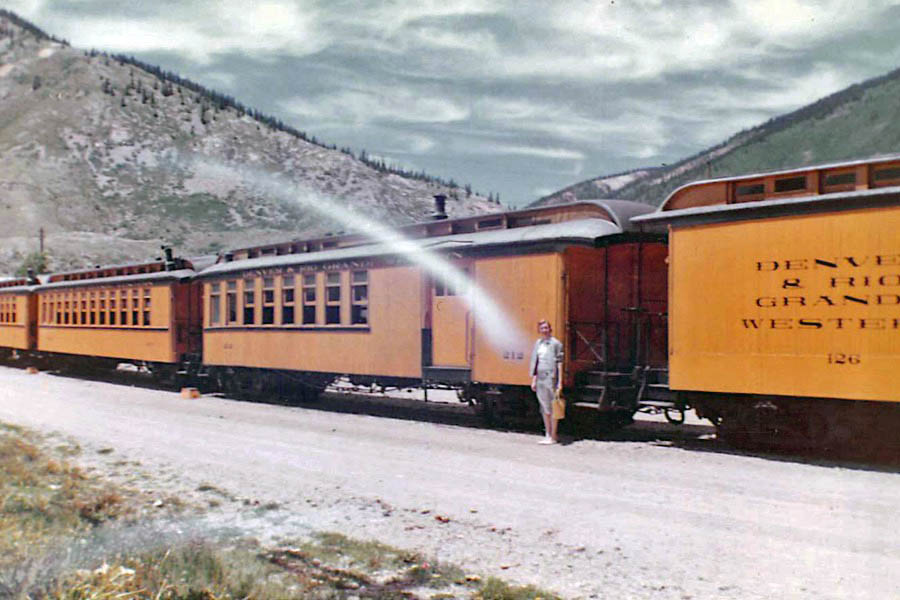
Silverton, Co / Jun 1959 / JCH

See also our complete Mixed Train to Silverton Fallen Flag scrapbook in Mainlines
Publications
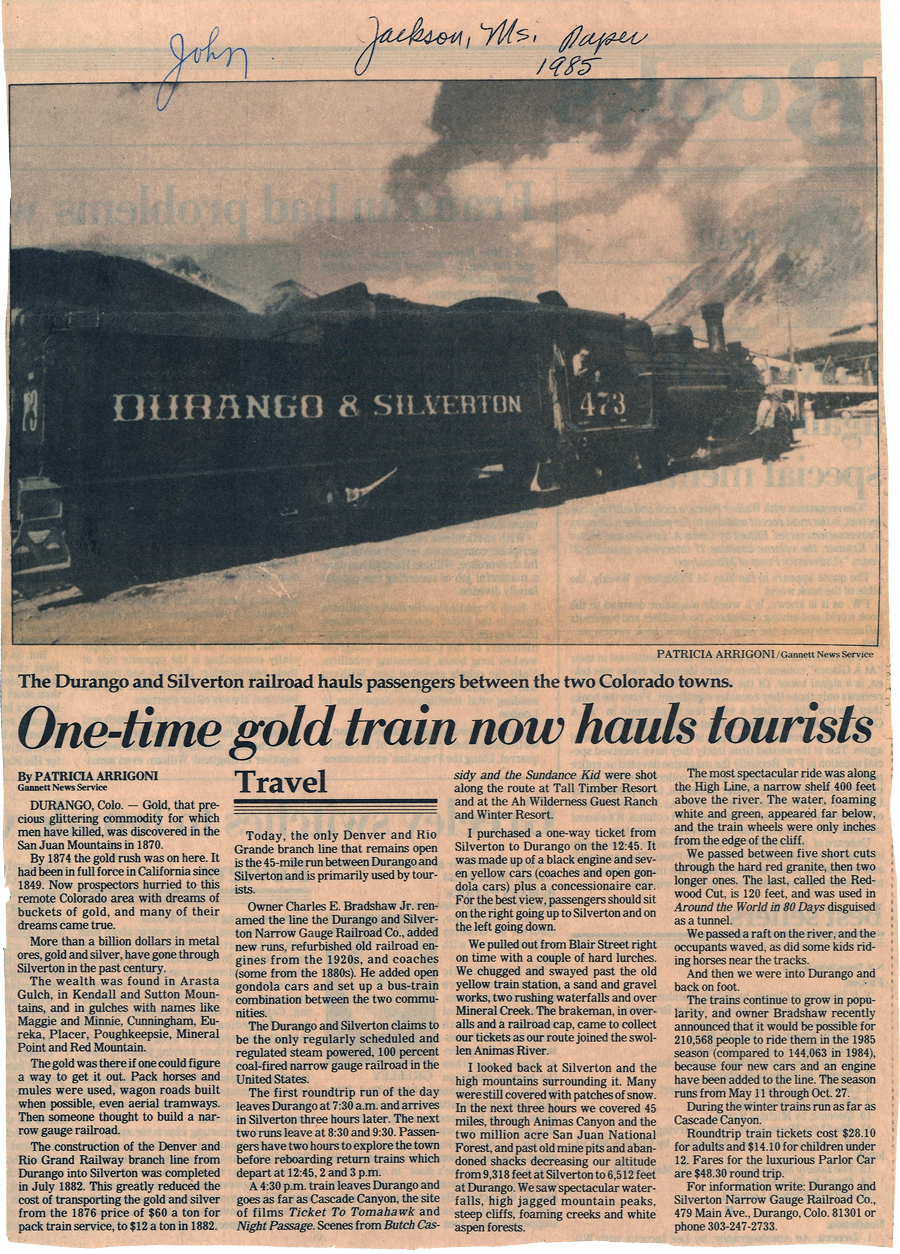
from The Jackson (Mississippi) Clarion-Ledger newspaper - 1985 / collection


1990 brochure / collection

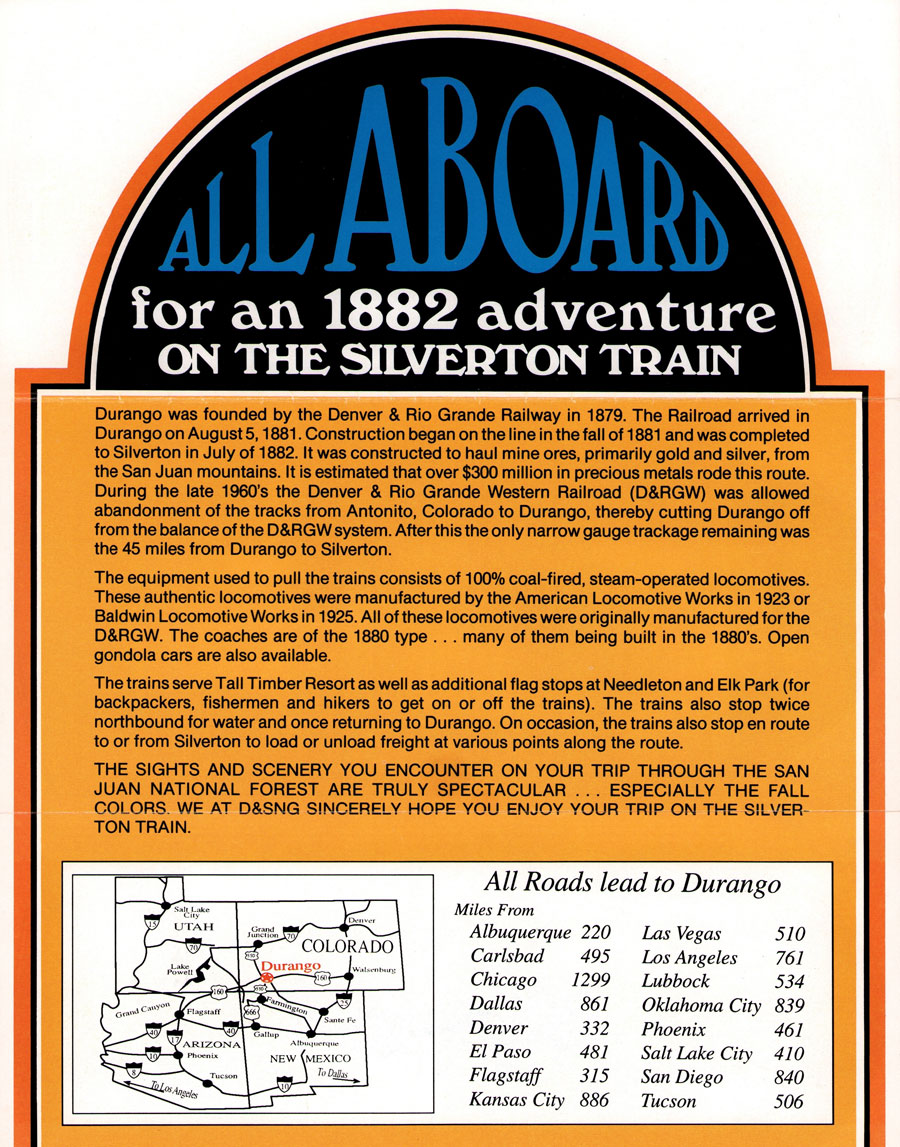
1996 brochure / collection
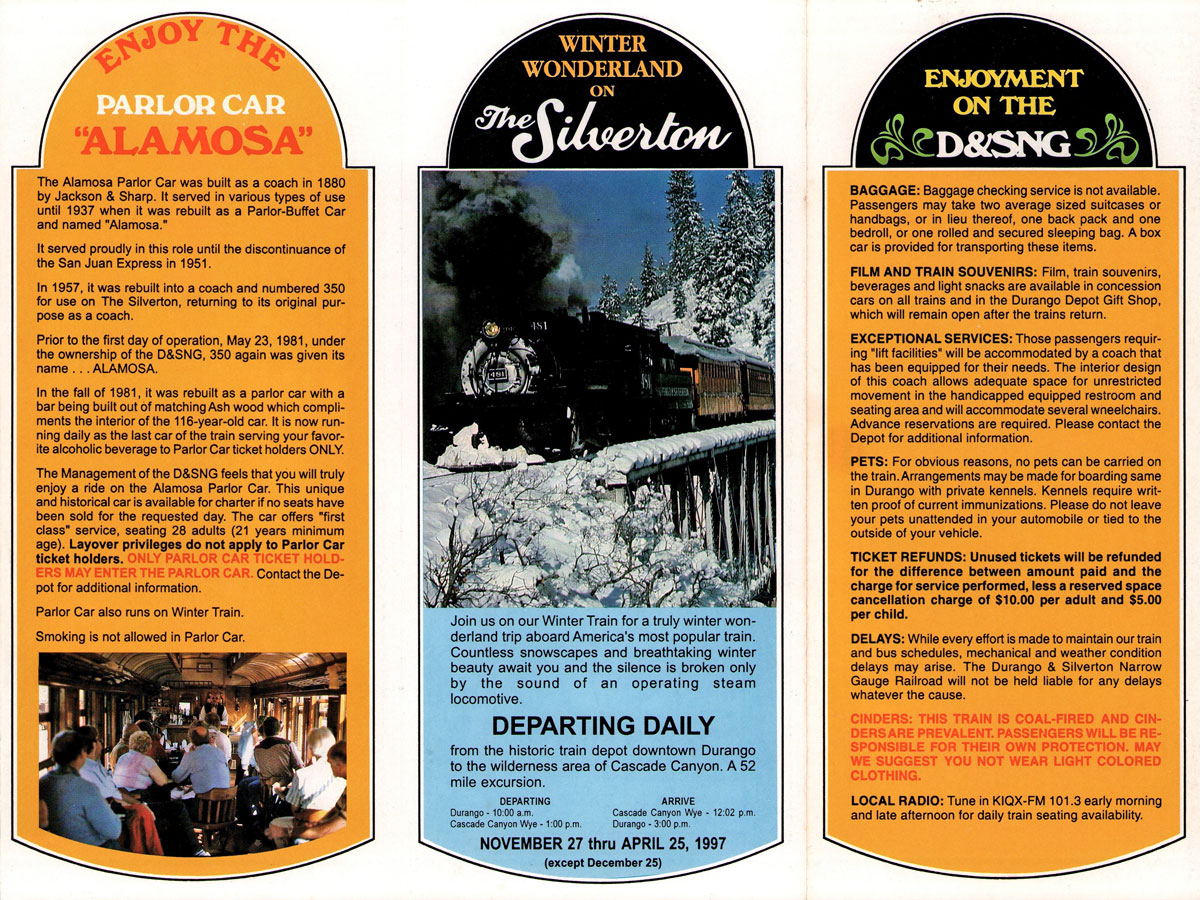


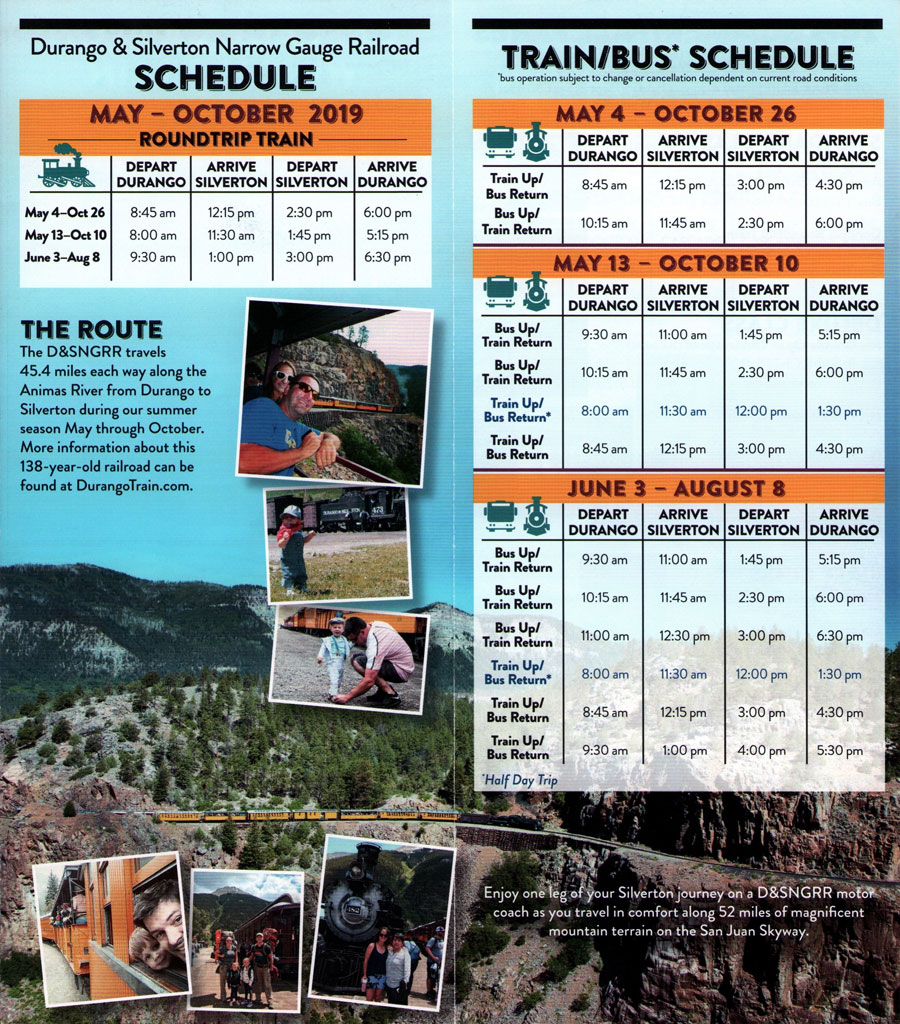
2019 brochure / collection
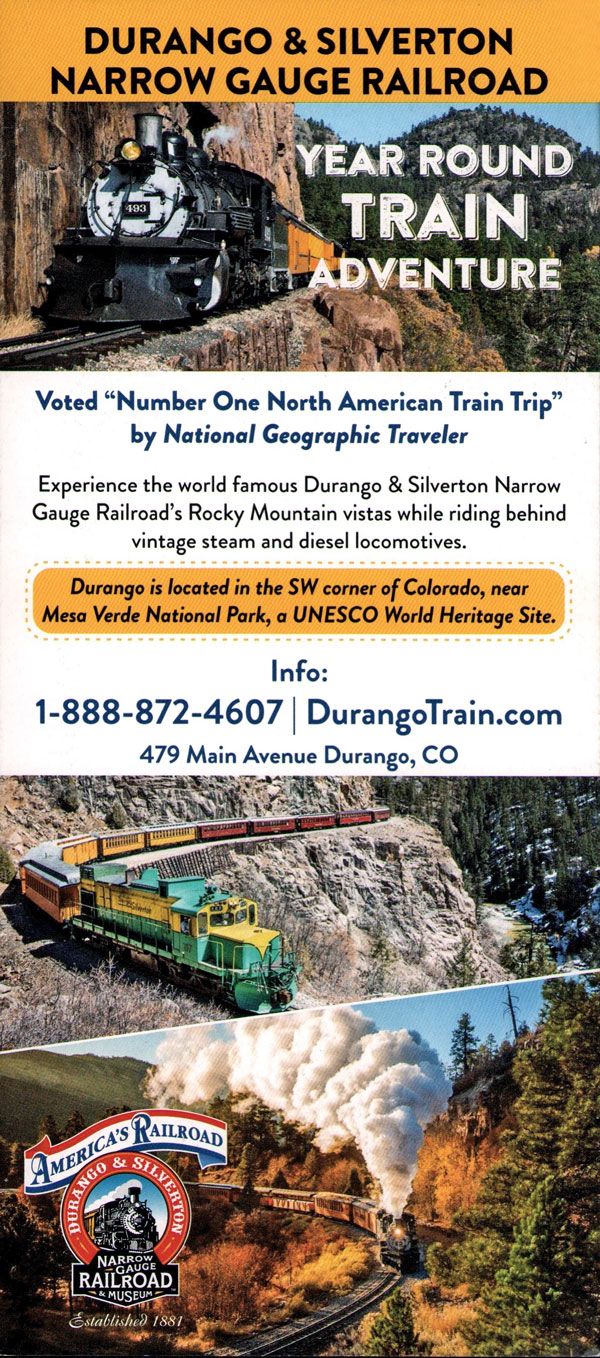
2023 brochure / collection
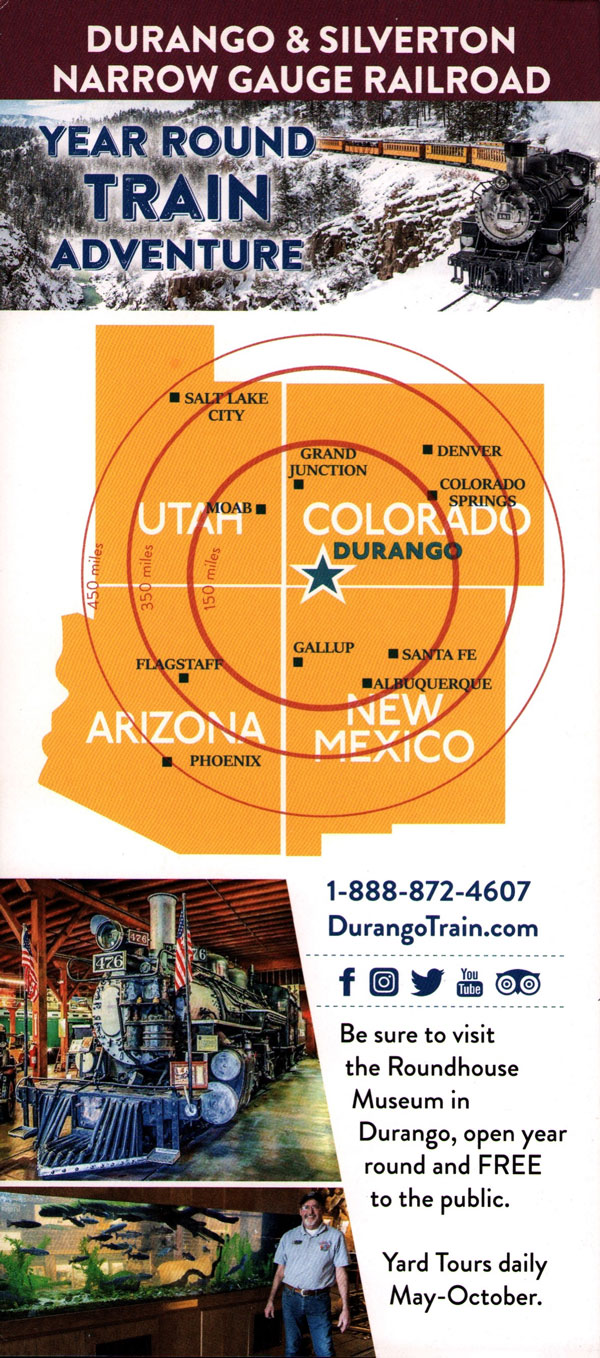
 Article
Article
Durango Railroad Visionary Charles Bradshaw Dies
December 31, 2013
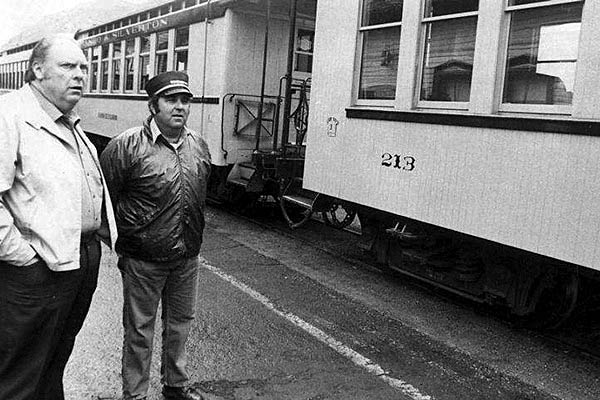 When Charles E. Bradshaw Jr. bought the Durango to Silverton branch of the Denver & Rio Grande Railroad in 1981, it marked an important turning point for the economies of both Durango and Silverton. Bradshaw died Dec. 21 in Orlando, Fla. He was 83.
When Charles E. Bradshaw Jr. bought the Durango to Silverton branch of the Denver & Rio Grande Railroad in 1981, it marked an important turning point for the economies of both Durango and Silverton. Bradshaw died Dec. 21 in Orlando, Fla. He was 83.
For the Denver & Rio Grande Railroad, the branch was an outlier. In 1964, the company had made an attempt to abandon the route, which was thwarted, in part, by concerted lobbying from community members. The route had been disconnected from the rest of the company’s system since 1969, leading to more uncertainty about its future.
“Since the 1950s, the Denver & Rio Grande had been trying to get rid of it, and the deals kept falling through,” said Jim Mayer, who was vice president and superintendent of operations and maintenance during the first two pivotal years of Bradshaw’s ownership. “Shipping people was a whole lot different than a carload of coal, with much higher liability. From a culture around a century old, Bradshaw brought the railroad into its own. It was arguably the hugest turning point in the railroad’s history.”
Rod Barker, who owns the Strater Hotel, remembers the concern in town in those days.
“My dad and a number of others had formed the Durango Railroad Co. to try to buy it,” he said. “They were so pleased they didn’t have to do that. Charlie brought a level of commitment to ‘our’ railroad that was as deep as any member of this community.”
As the railroad turned, so, too, did Durango and Silverton.
“It saved the town of Durango,” historian Duane Smith said. “What Bradshaw did was vital. And just think what Silverton would be without it. It would be a ghost town between here and Ouray, instead of being preserved as a town and community.”
Barker sees the importance of the train firsthand.
“A large percentage of our guests come to Durango to ride the train,” he said. “People who love the historic train also love the historic Strater. It’s a part of Americana that also shapes the nature of our downtown.”
When Bradshaw bought the train on March 25, 1981, the Denver and Rio Grande was running two trains a day from the Saturday of Memorial Day weekend to Labor Day. He wanted to keep the opening date that first year, and there was a lot of work to be done to be ready.
With his two main officers, Mayer and Amos Cordova, vice president and director of marketing, who also was in charge of the depot, ticket sales and customer service, he undertook an ambitious program of improvements, some in those first two months and others that took a number of years.
“We became vice presidents overnight,” Cordova said, “and we had to start from scratch, from hiring people to putting the locomotives back together for the summer season.”
Starting from scratch included renaming the railroad, and the Durango & Silverton Narrow Gauge Railroad was born.
Bradshaw had engineers and workers widen clearances along the route, particularly in the narrow Animas Canyon. The goal was to allow larger locomotives to travel the route, which then would be able to pull more cars. He also bought and refurbished several locomotives; built, refurbished and winterized new cars and gondolas; and built the Cascade Wye. For the first time in almost 100 years, significant work was done on the Highline Bridge to make sure it could carry the heavier loads.
“I bought 5,000 railroad ties that first year,” Mayer said. “We upgraded from 65-pound rail per yard of rail to 85-pound rail, which would improve the ride and allow the larger locomotives on the line.”
In Silverton, Bradshaw purchased the Silverton Depot, returning it to service in 1985. No one, except for maybe Bradshaw himself, knew how many tons of gravel for ballast was purchased and laid to raise the tracks.
“He wanted to come back to more of a purist idea,” Mayer said. “For movies back in the 1950s, they had installed big pieces of sheet metal over the smokestack to make it look like steam and over the headlight to make it look like an old oil burner. The first thing we did was take that sheet metal off to really set something up for people who loved trains.”
For Ed Zink, founder of the Iron Horse Bicycle Classic, Bradshaw was a key supporter in the early days, even standing at the finish line to welcome the winners in Silverton.
“The word visionary applies,” Zink said. “He had to partner with other people in the community to be strategic in insuring a stable tourism economy.”
Bradshaw dealt with several natural disasters during his ownership, including a flood that washed out several miles of track and the historic fire at the Roundhouse in 1989, which damaged all the locomotives.
“When the Roundhouse burned,” his former personal secretary Patsy Dolan said, “the ashes hadn’t even cooled down before he said, ‘We’re going to rebuild those locomotives, and we’re going to open on time.’ And he was adamant about keeping things historically correct.”
Bradshaw, who was born July 10, 1930, had made his money in Florida as a citrus grower at his family’s orchards, Hi-Acres, cattle rancher and as owner of a fertilizer plant.
Many people had stories about him as a straight shooter with some idiosyncrasies, including the fact that for several years he would accept only cash or checks. Dolan said it took some convincing to get him to accept credit cards when they began taking telephone reservations and became computerized.
When he decided to sell the railroad in the mid-1990s, he wanted to be sure his stewardship continued.
Al Harper, the current owner of the train through his company American Heritage Railways, credits Bradshaw with changing his life as well as that of the railroad.
“He took it from barely making it to carrying really big numbers,” Harper said. “And he loaned me a pile of money so I could buy it in a hurry. He told me, ‘You’re the only guy I trust with my railroad.’”
Harper’s career shifted from real estate in Florida to now owning two railroads and Rail Events, a company that organizes events such as the Polar Express, and he said he wouldn’t trade it for anything.
“I want him to be remembered for what he did for this community,” Harper said, “and for giving Al Harper the opportunity to become the current guardian of this great American treasure.”
Ann Butler / Durango Herald

1986 tourist train guide ad / collection
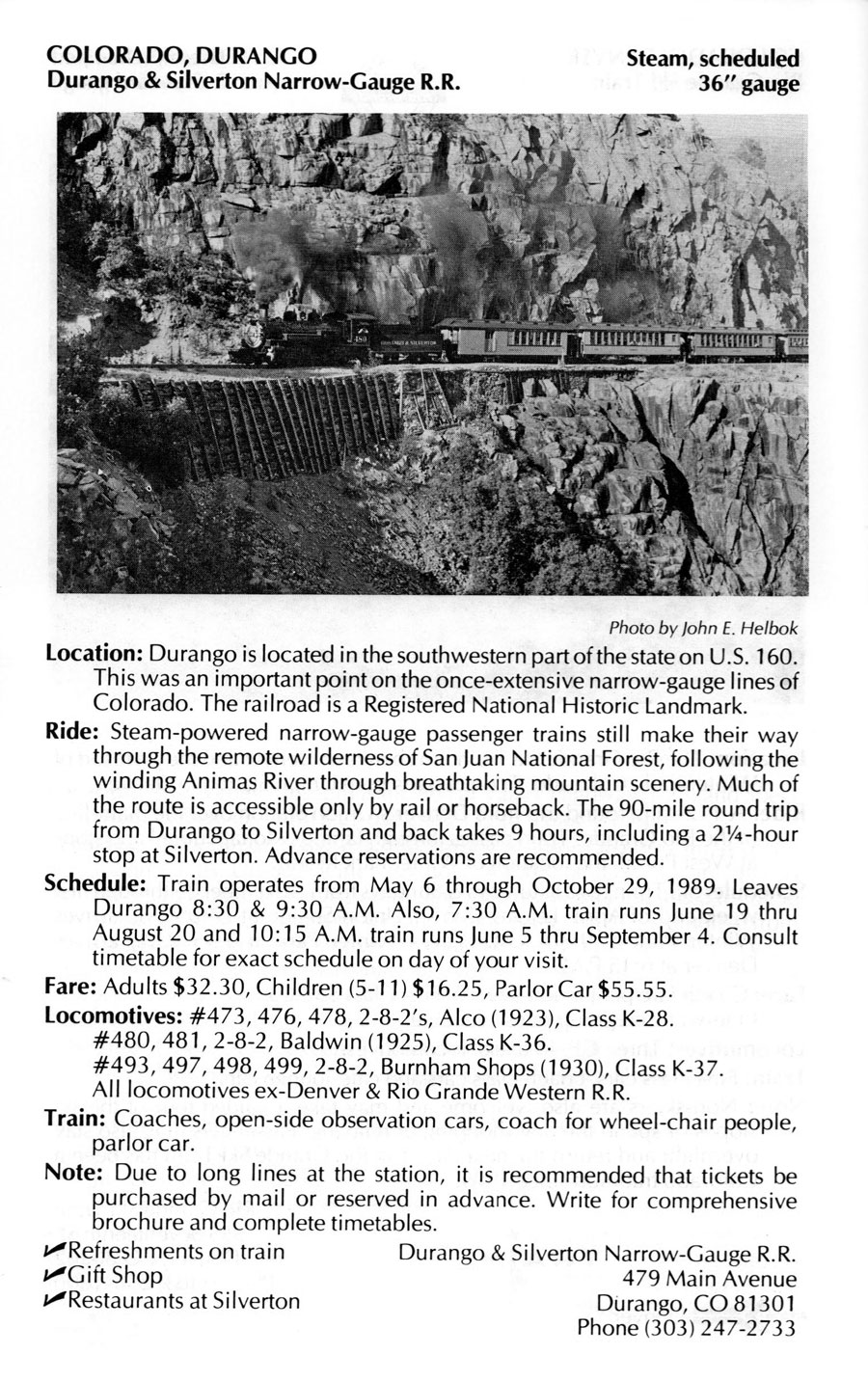
1989 tourist train guide ad / collection
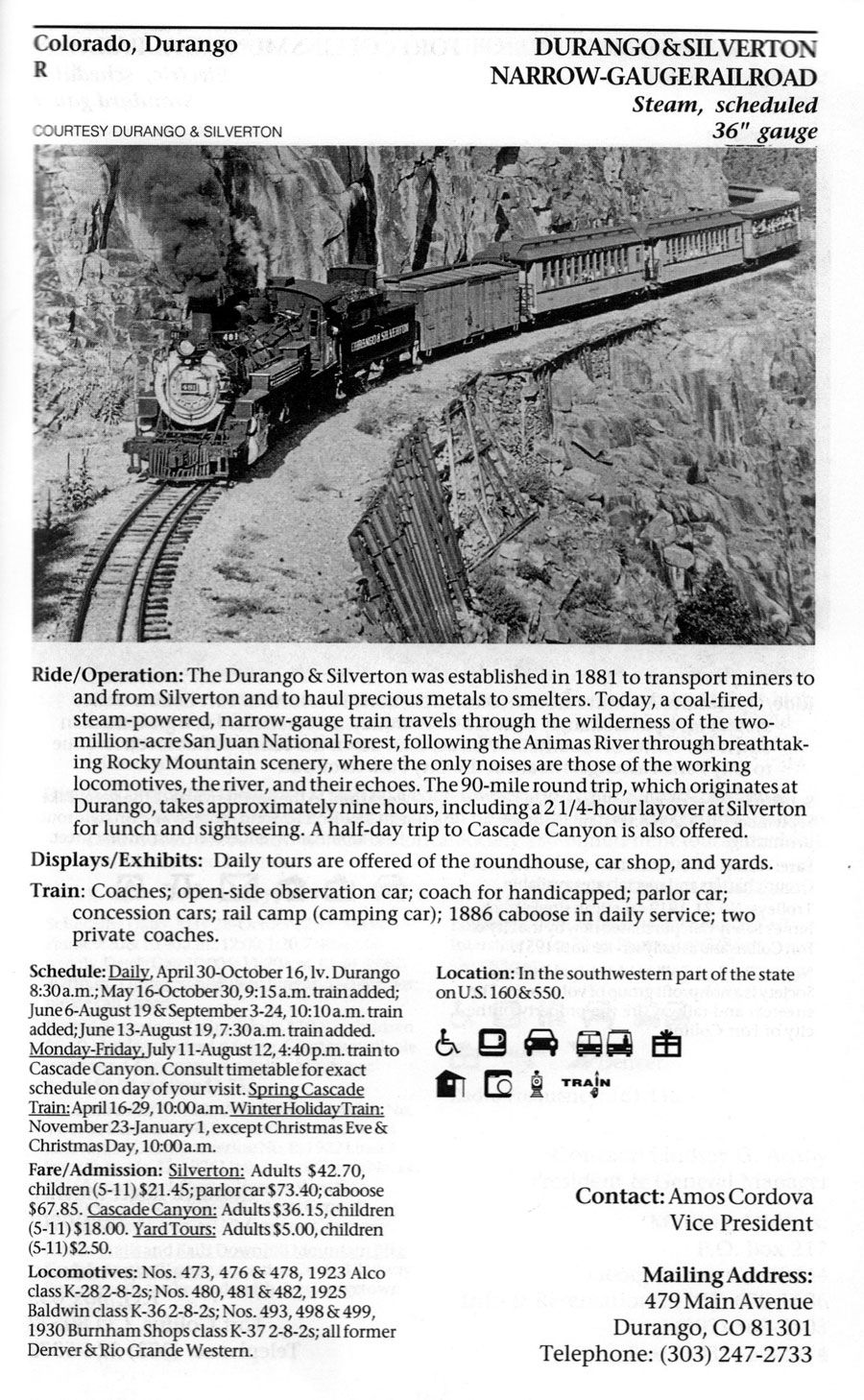
1994 tourist train guide ad / collection
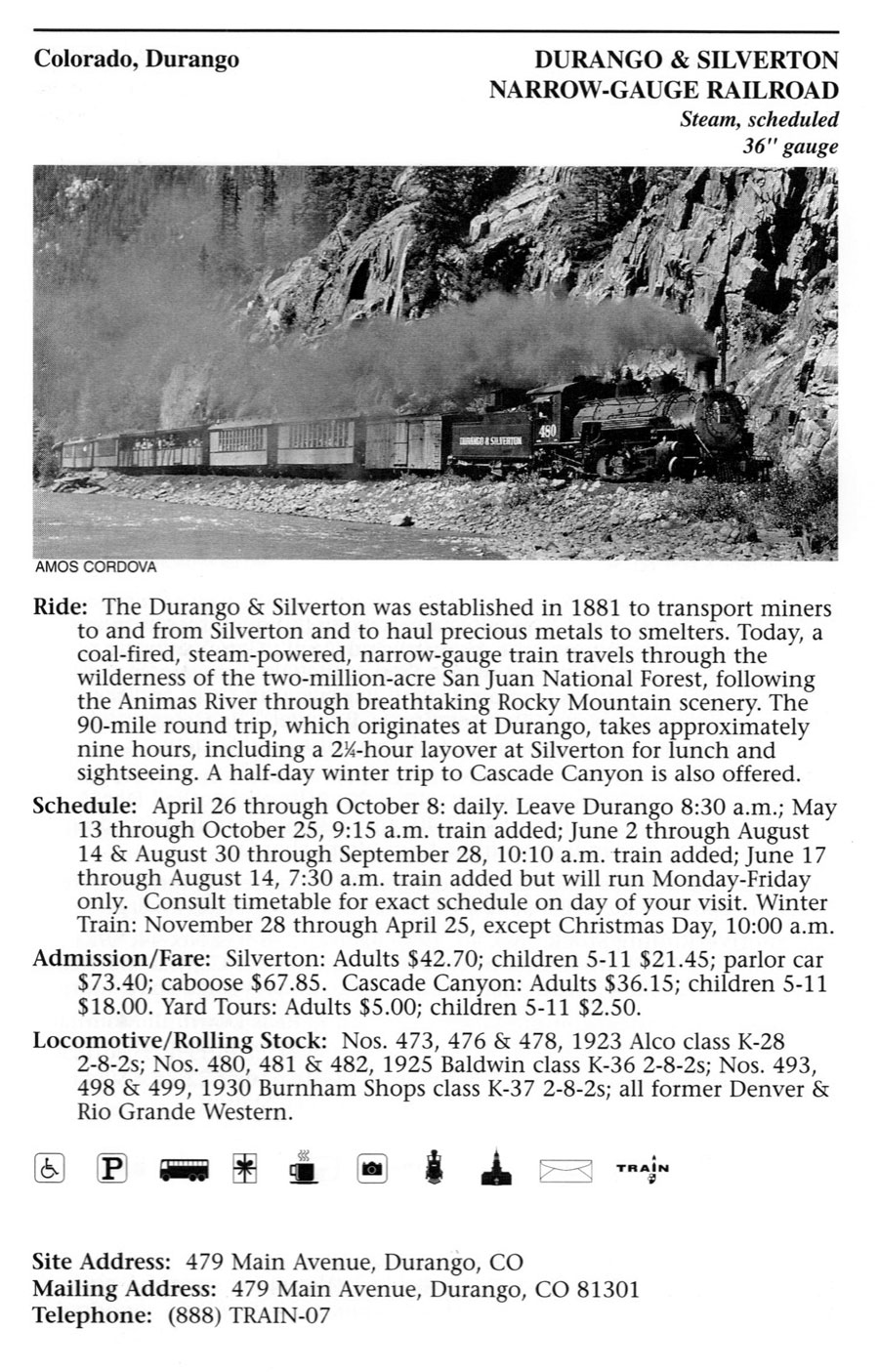
1998 tourist train guide ad / collection
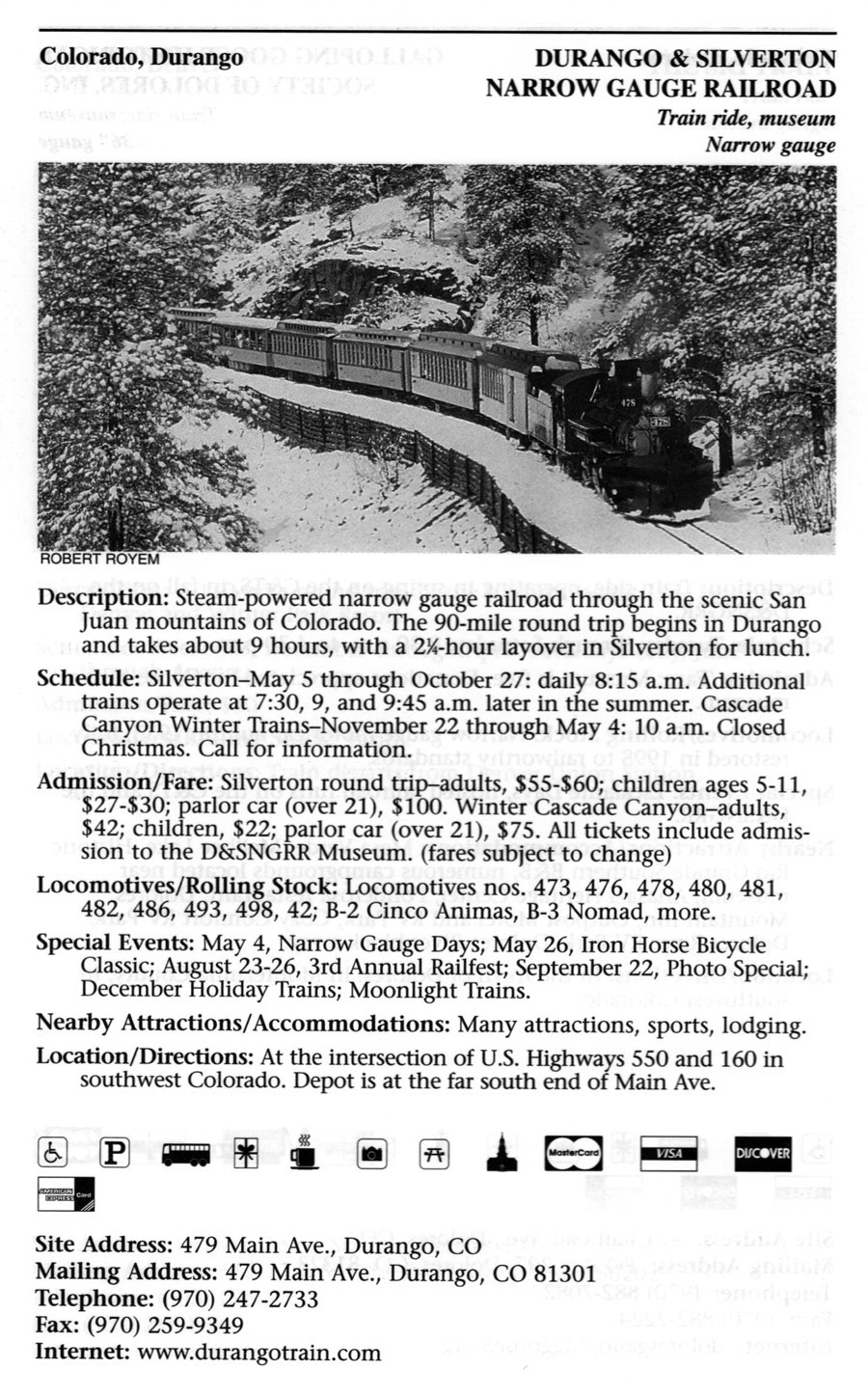
2001 tourist train guide ad / collection
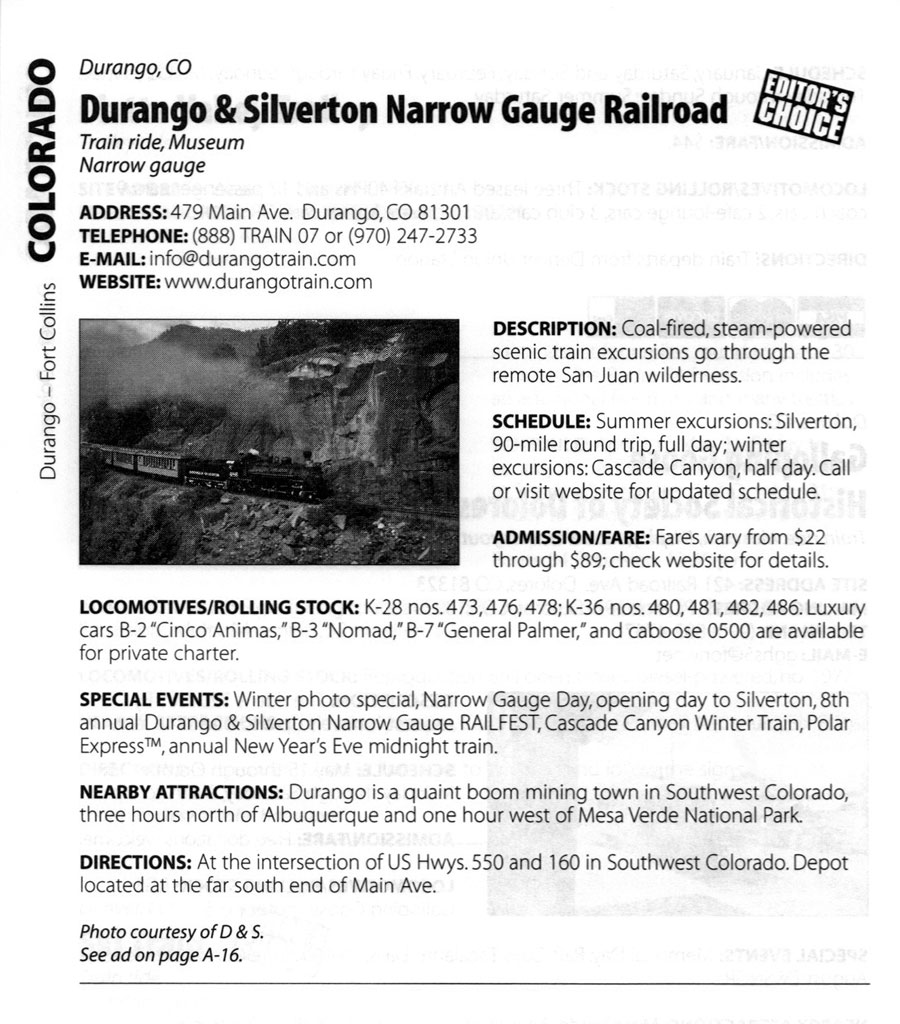
2006 tourist train guide ad / collection
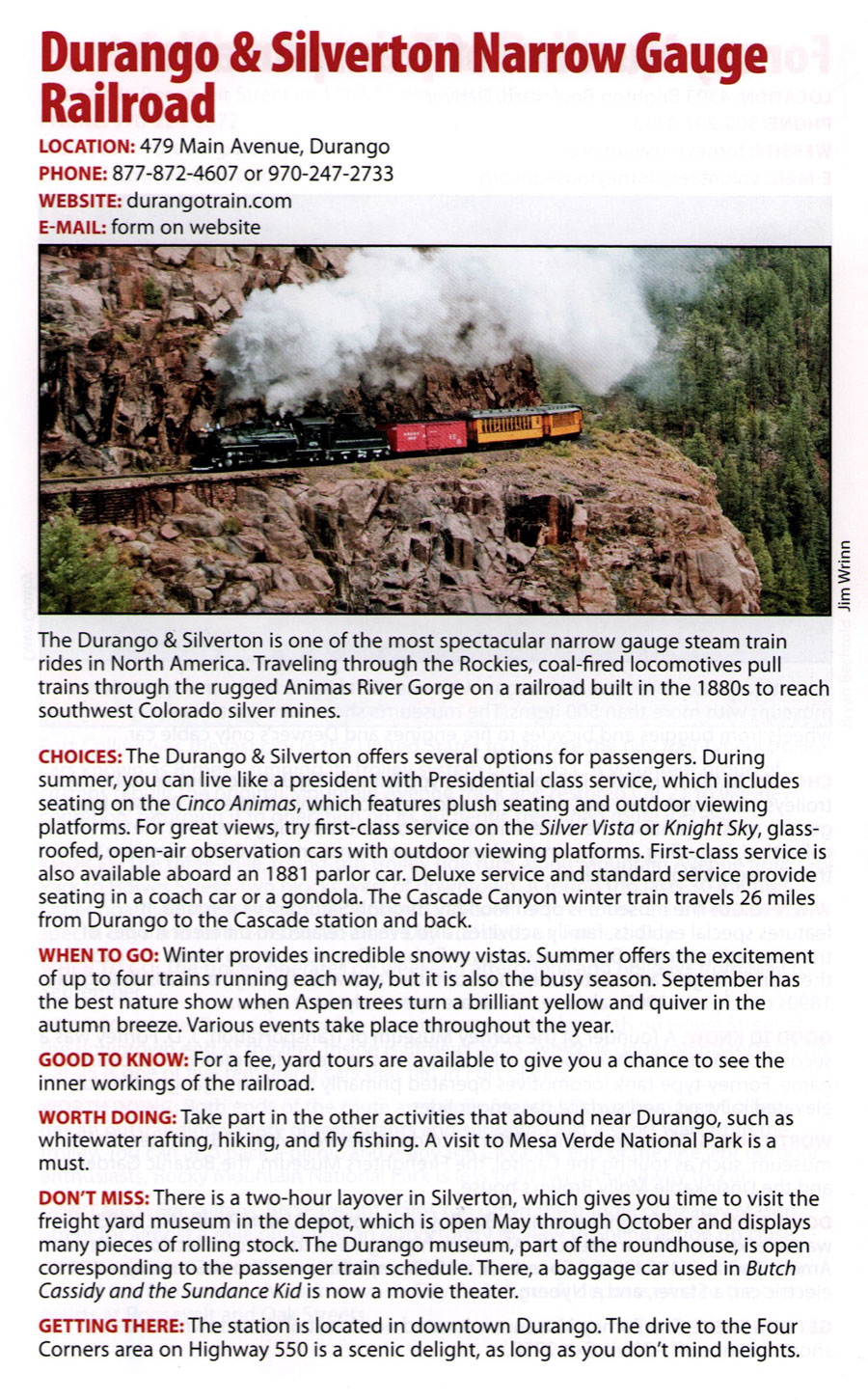
2013 tourist train guide ad / collection

2019 tourist train guide ad / collection
Lagniappe



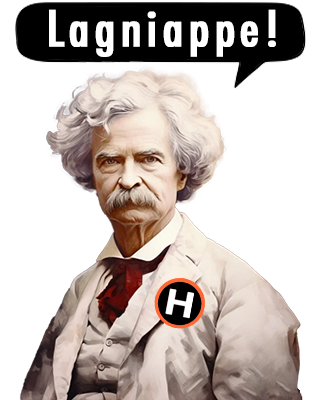

 Extra Board
Extra Board
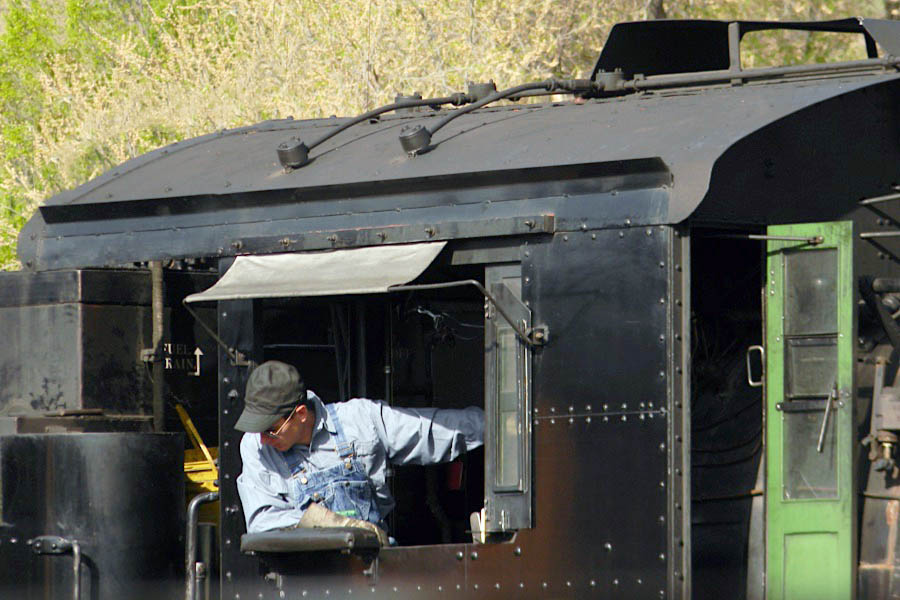
Durango, Co / May 2023 / ETH
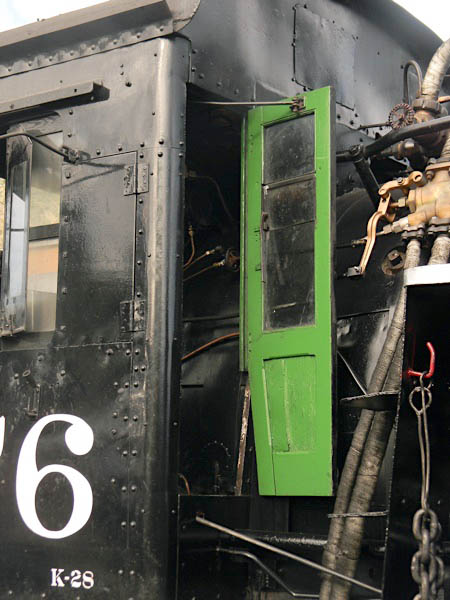
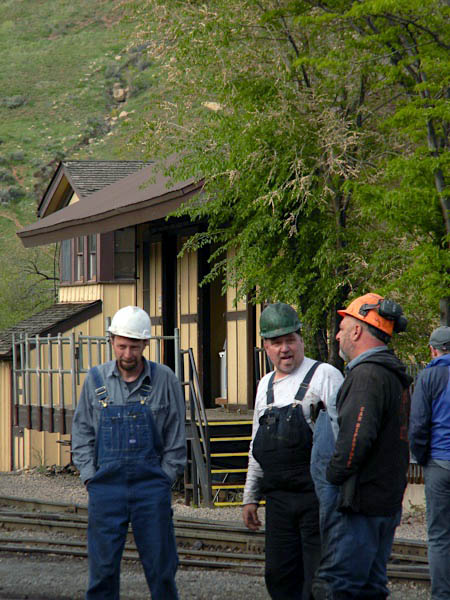

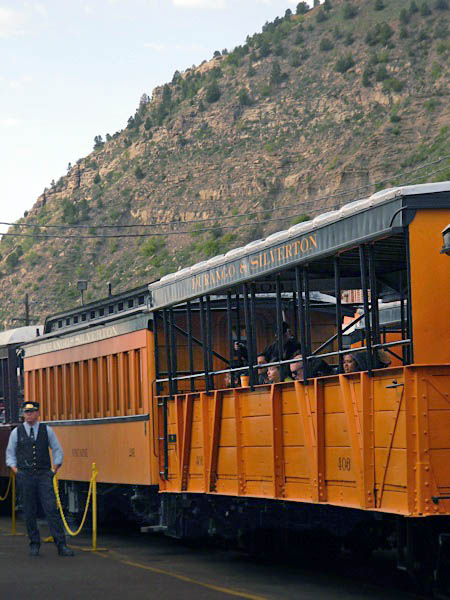

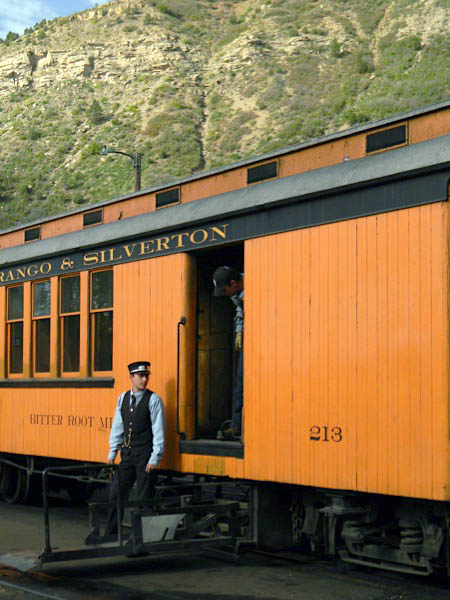
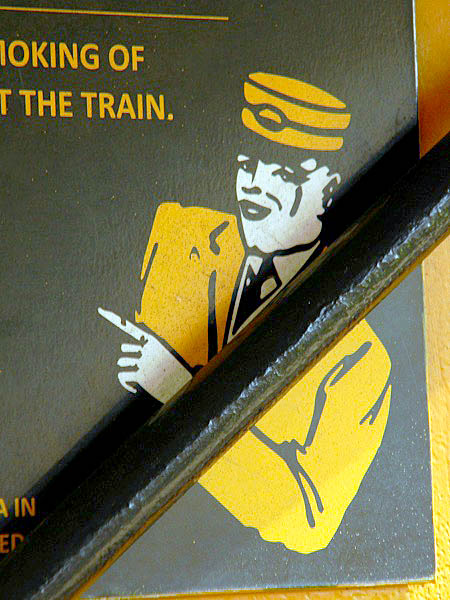
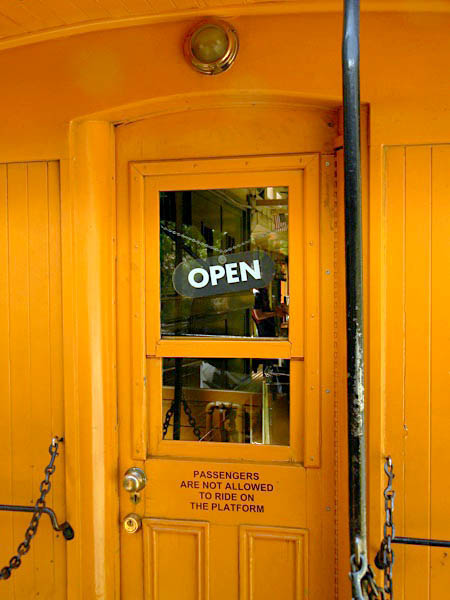
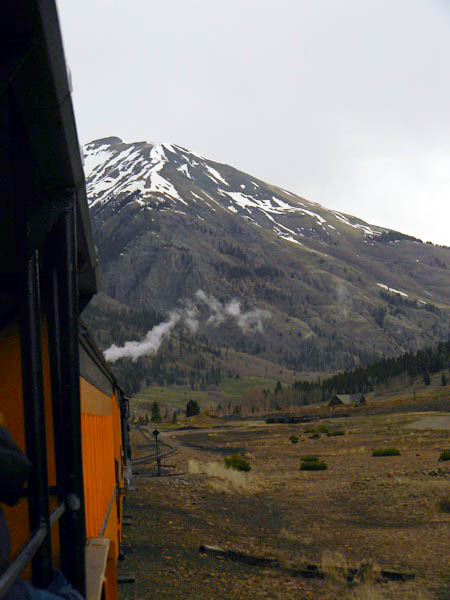
May 2023 / ETH
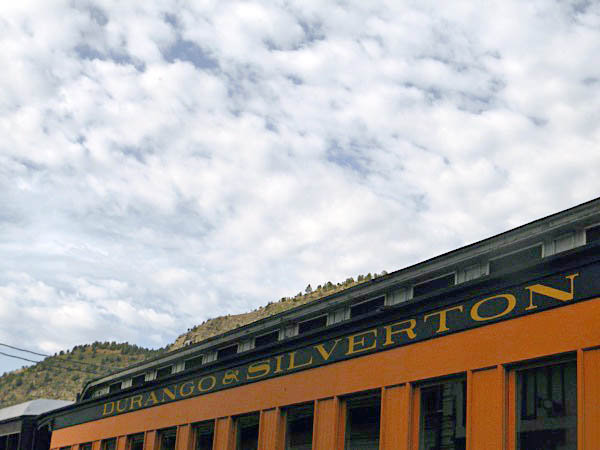
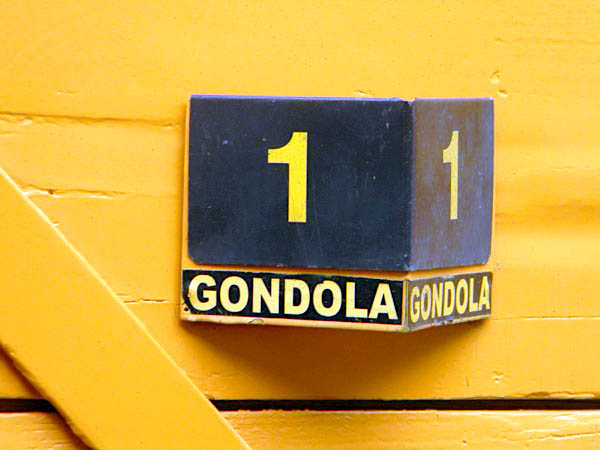
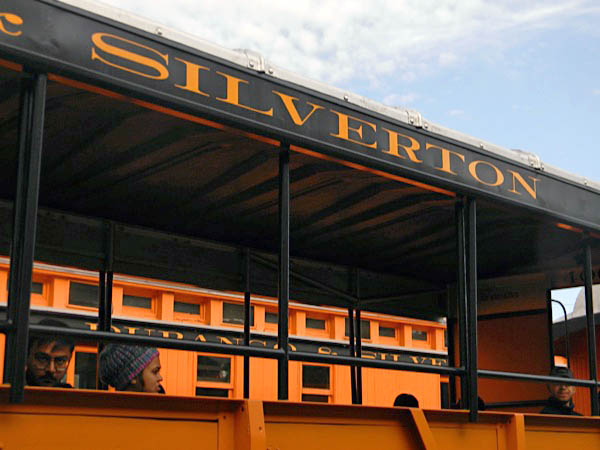
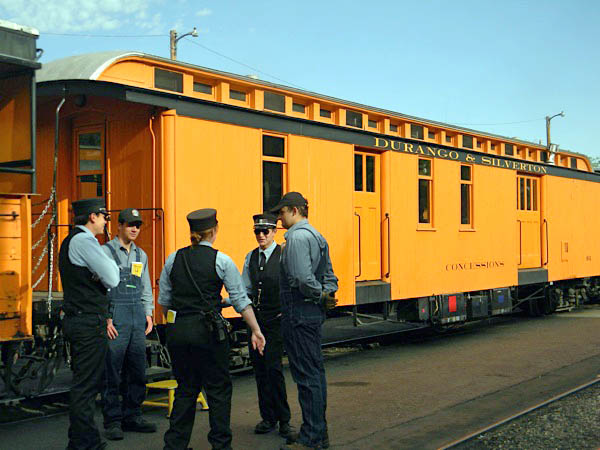
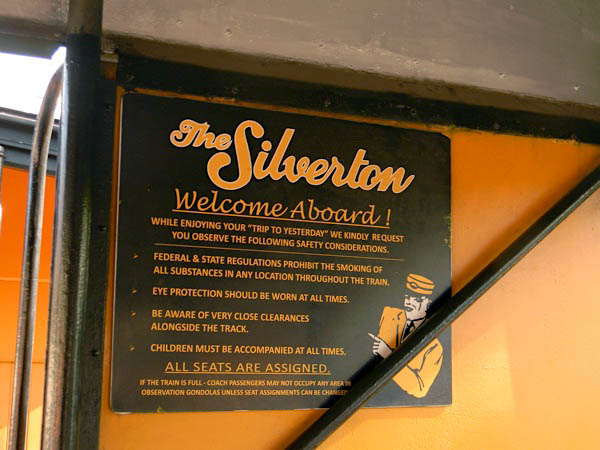
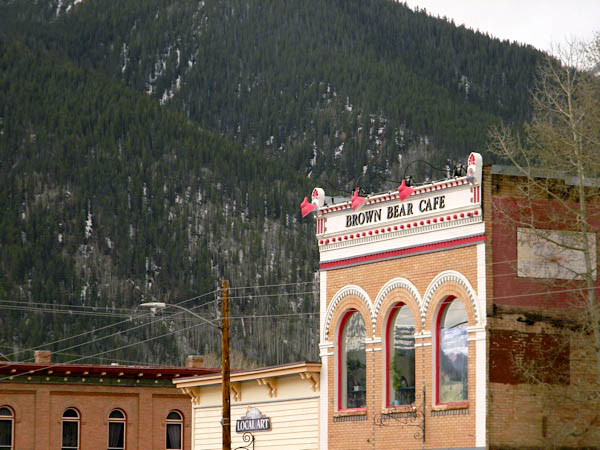
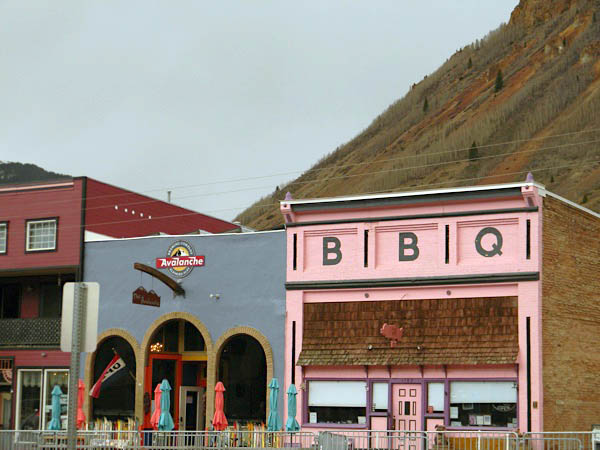

May 2023 / ETH

See also Ella's complete Extra Board image collection in Lagniappe
 Snapshots
Snapshots
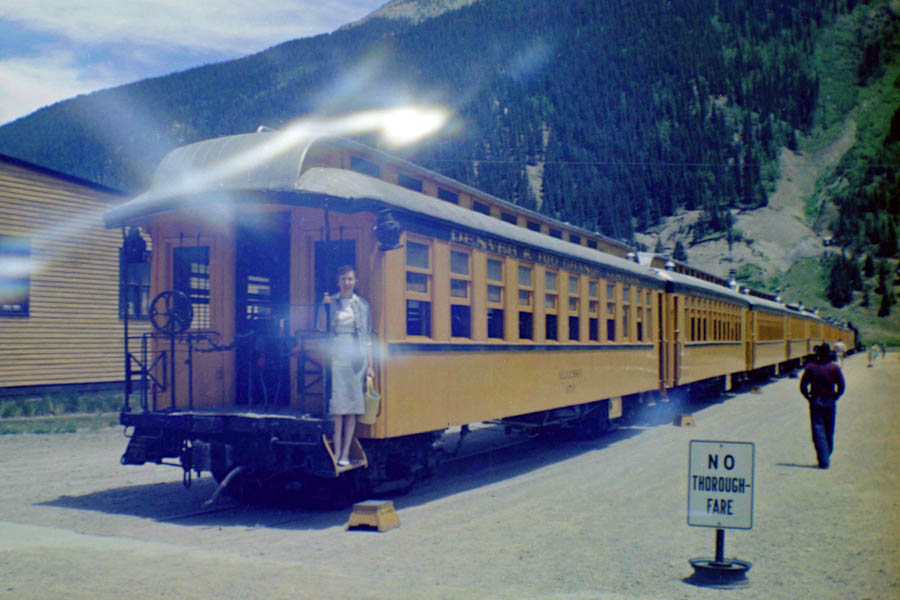
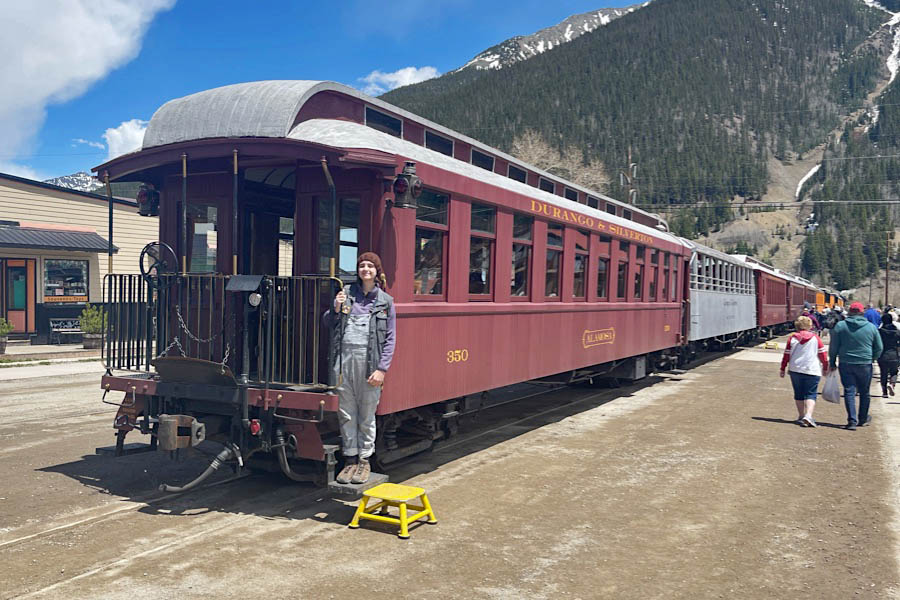
Silverton, Co / Jun 1959 and May 2023 / JCH and RWH
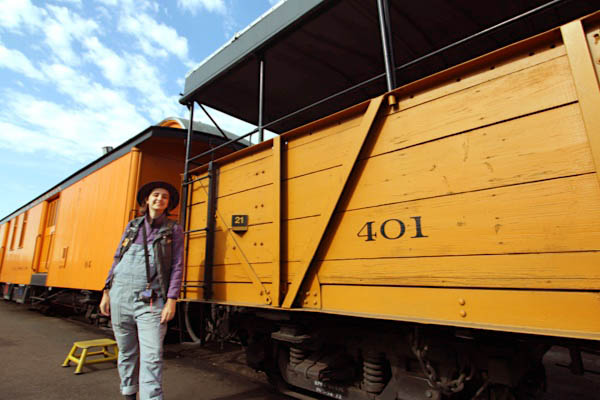
Durango, Co / May 2023 / RWH
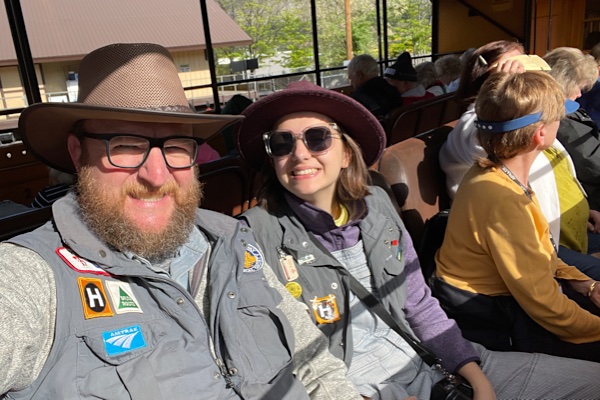
Durango, Co / May 2023 / RWH
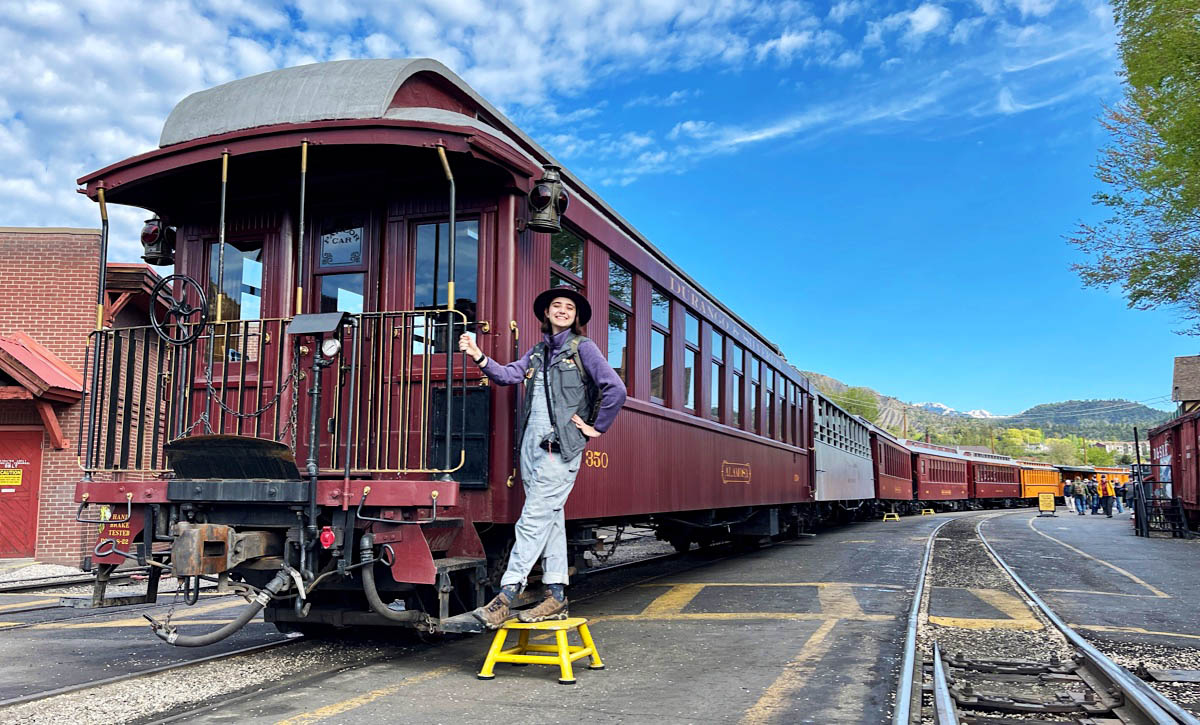
Durango, Co / May 2023 / RWH
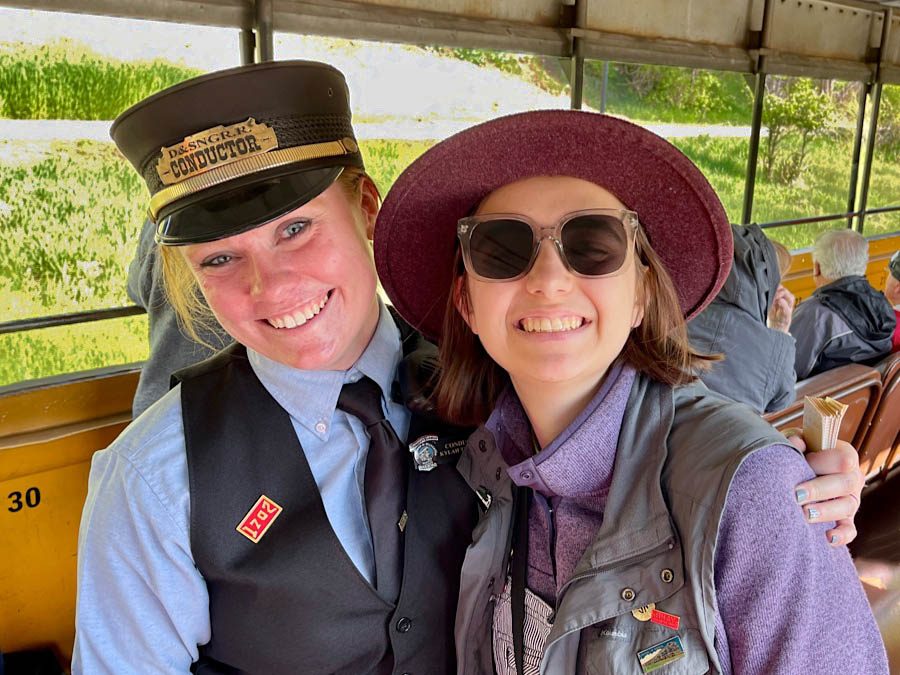
Trimble, Co / May 2023 / RWH

May 2023 / RWH
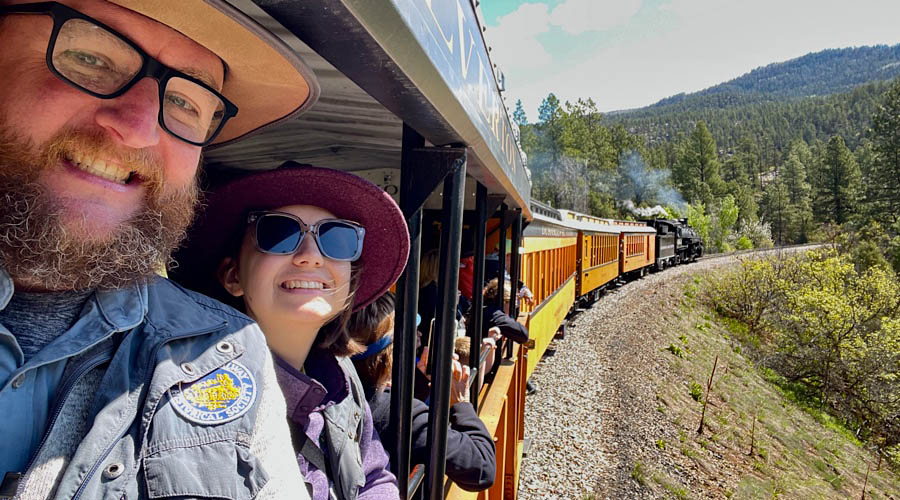
Hermosa, Co / May 2023 / RWH
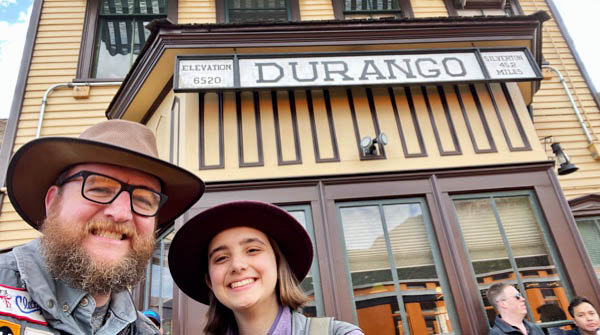
Durango, Co / May 2023 / RWH

May 2023 / RWH

Cascade, Co / May 2023 / RWH
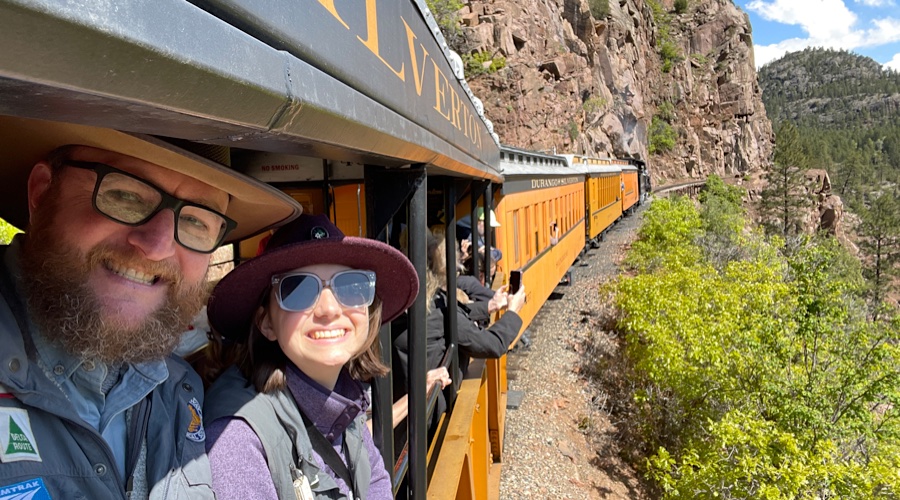
Rockwood, Co / May 2023 / RWH

Rockwood, Co / May 2023 / RWH
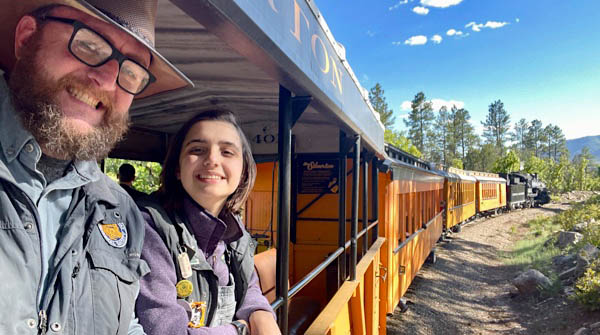
Hermosa, Co / May 2023 / RWH
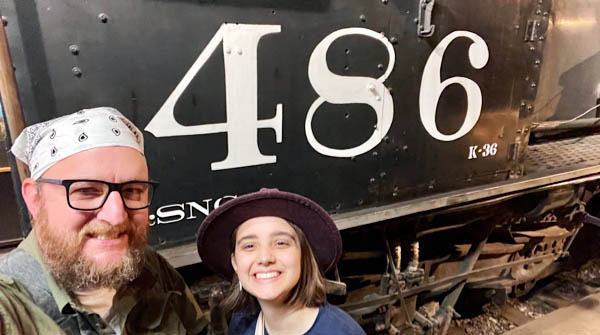
Durango, Co / May 2023 / RWH
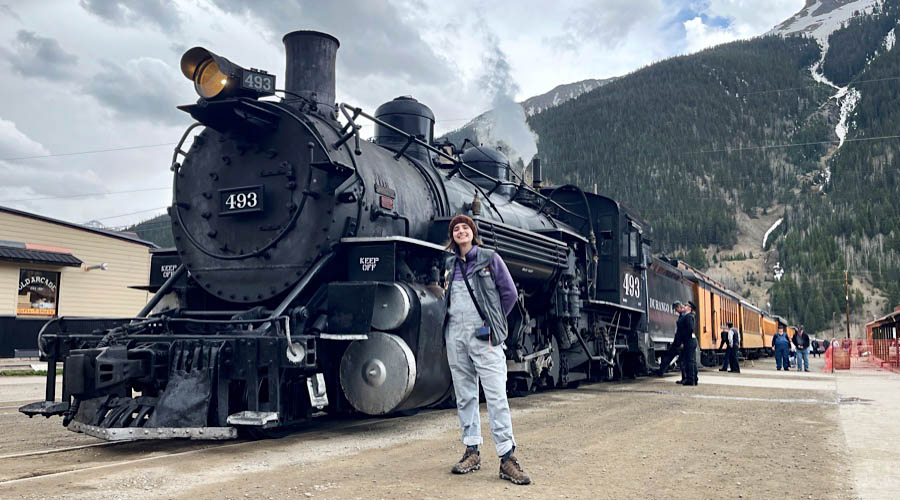
Silverton, Co / May 2023 / RWH
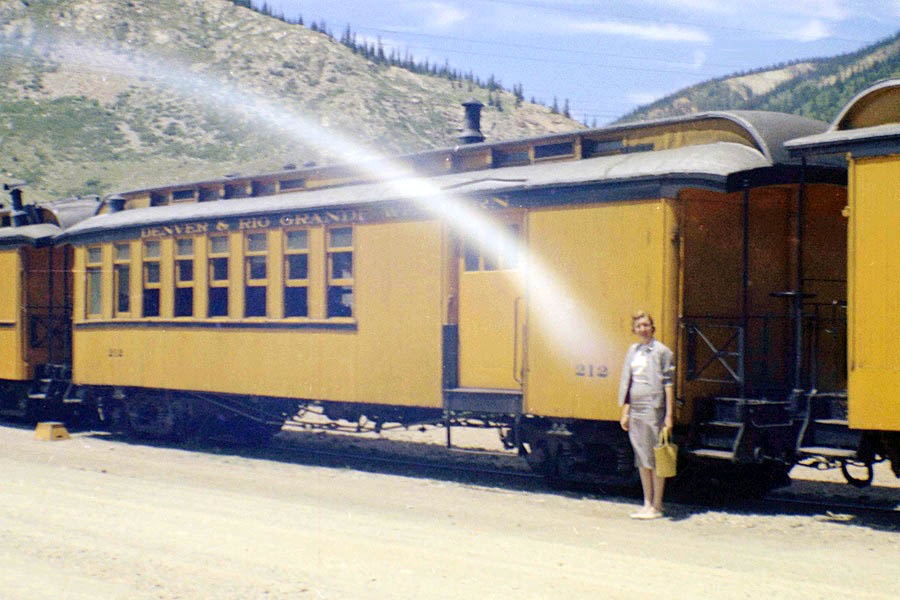
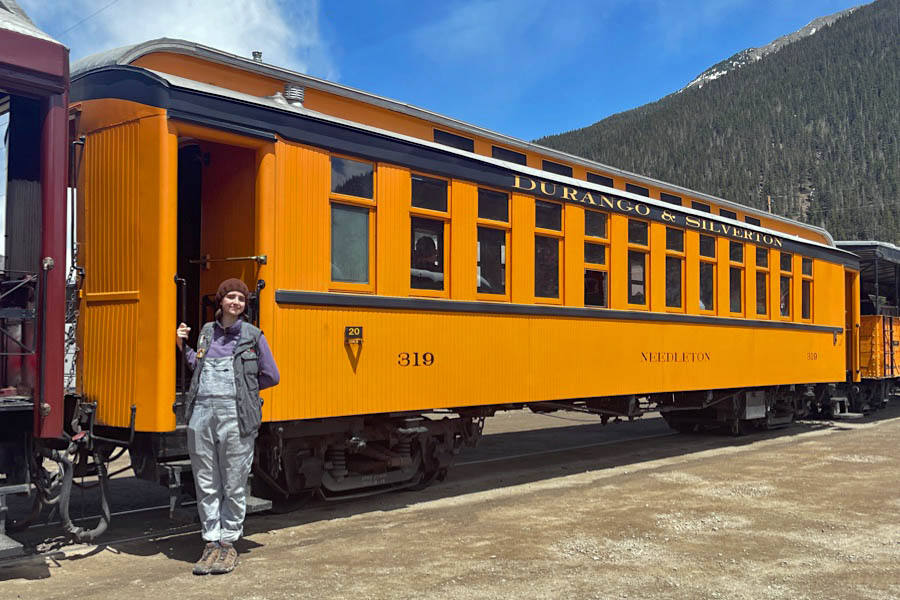
Silverton, Co / Jun 1959 and May 2023 / JCH and RWH
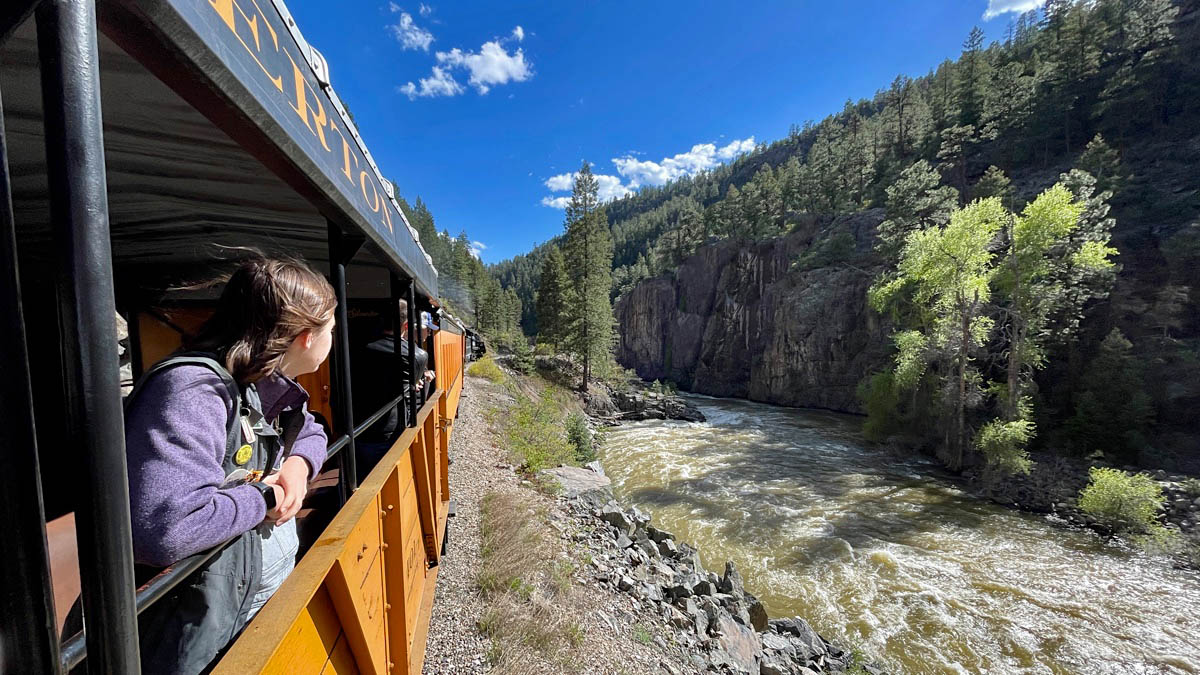
Tacoma, Co / May 2023 / RWH
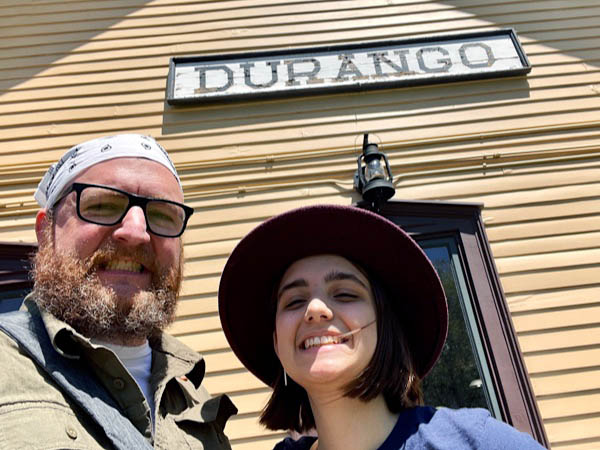
May 2023 / RWH
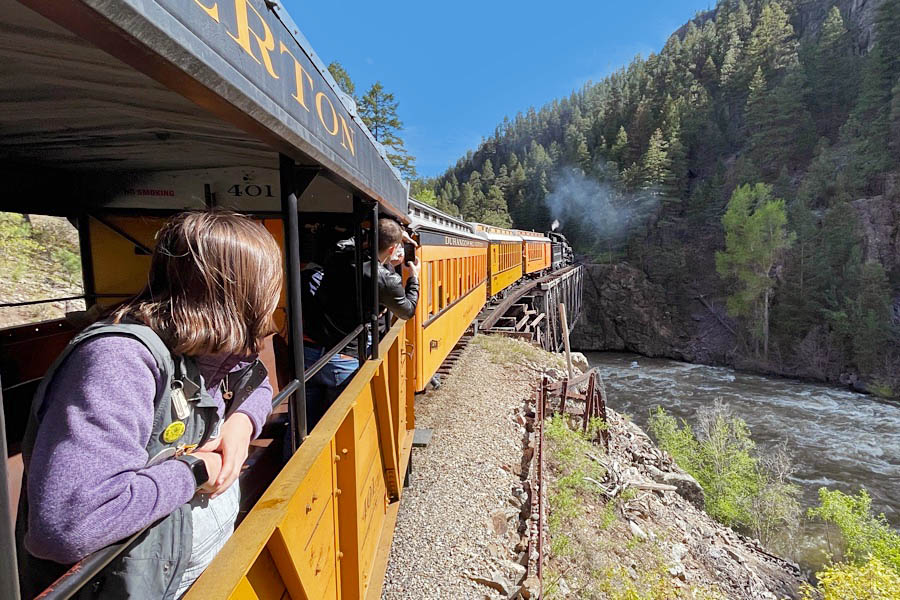
Tacoma, Co / May 2023 / RWH
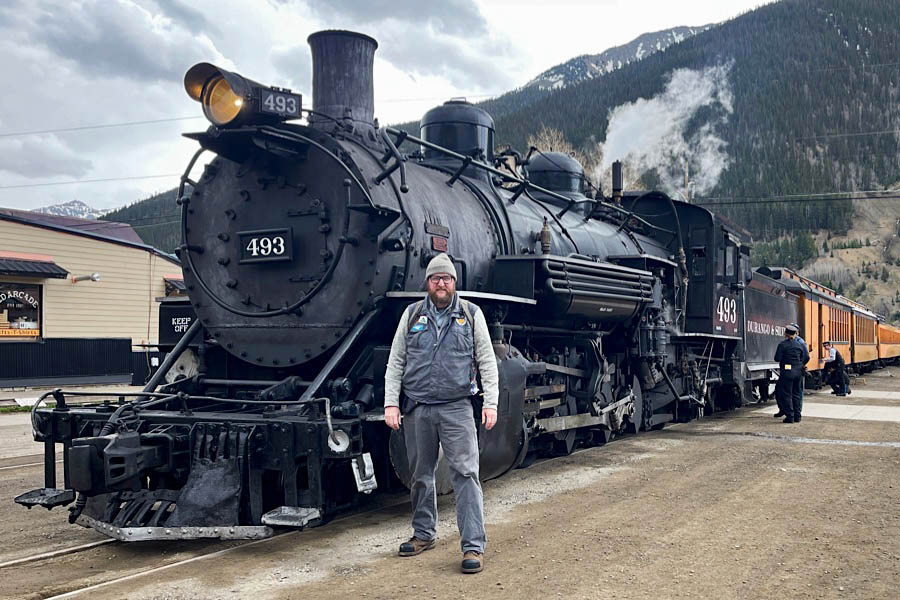
Silverton, Co / May 2023 / ETH
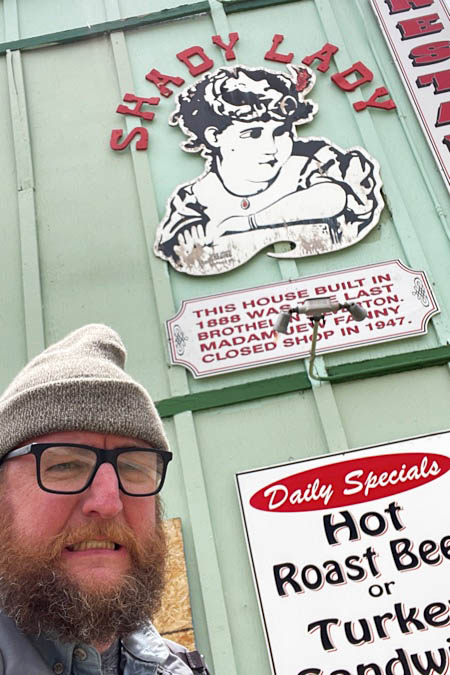
Silverton, Co / May 2023 / RWH

Silverton, Co / May 2023 / RWH

Silverton, Co / May 2023 / RWH
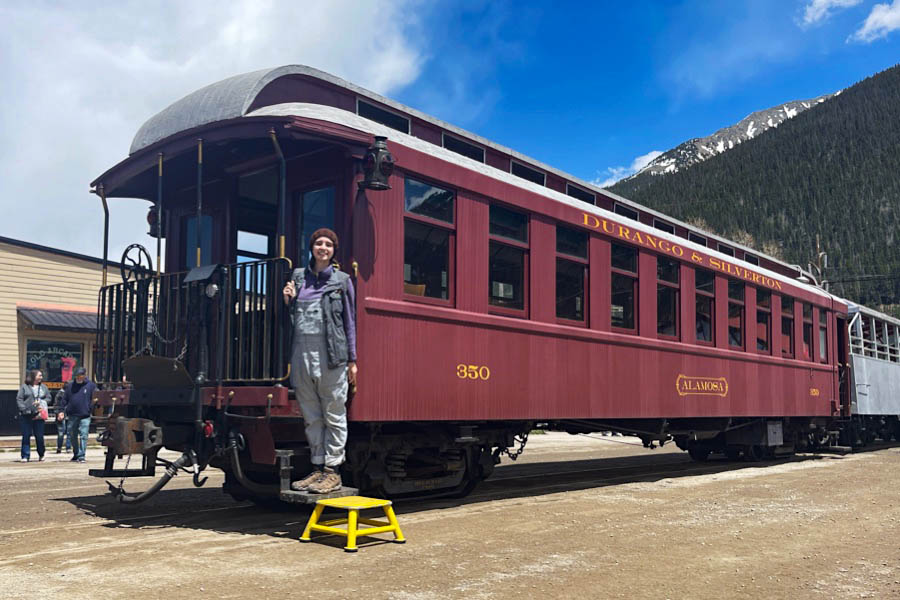
Silverton, Co / May 2023 / RWH

Silverton, Co / May 2023 / RWH

Durango, Co / May 2023
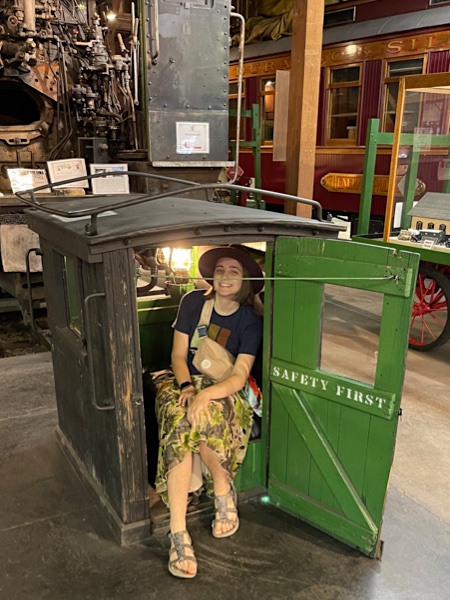
May 2023 / RWH
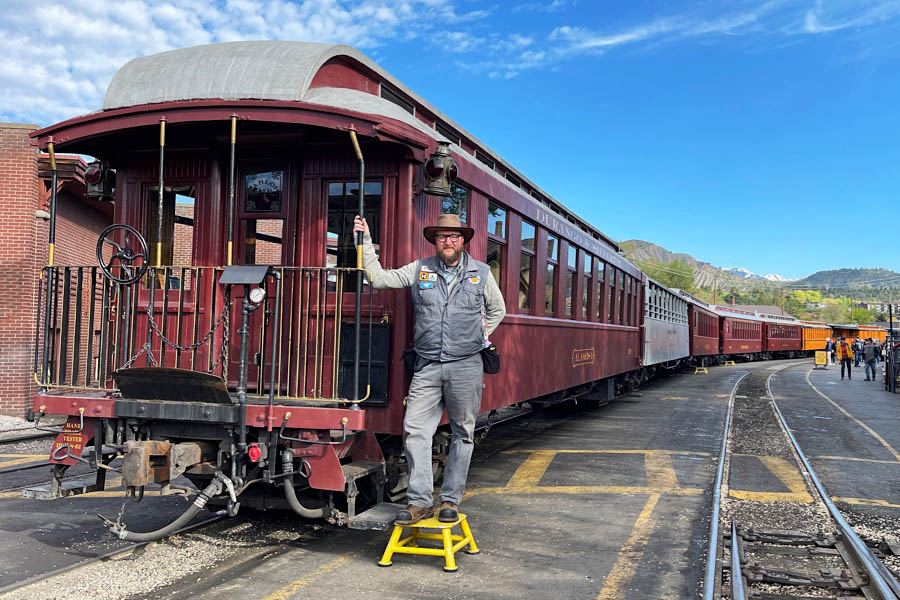
Durango, Co / May 2023 / ETH
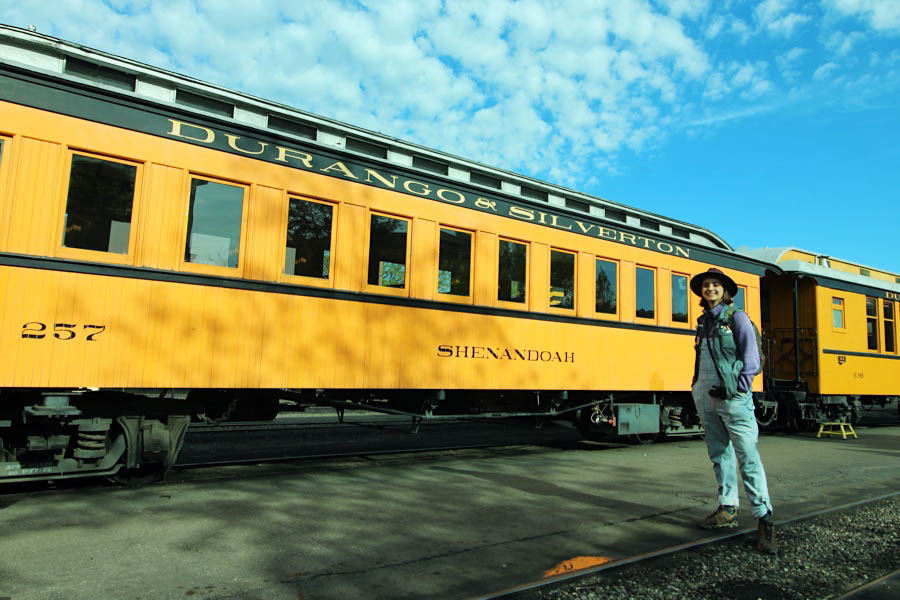
Durango, Co / May 2023 / RWH
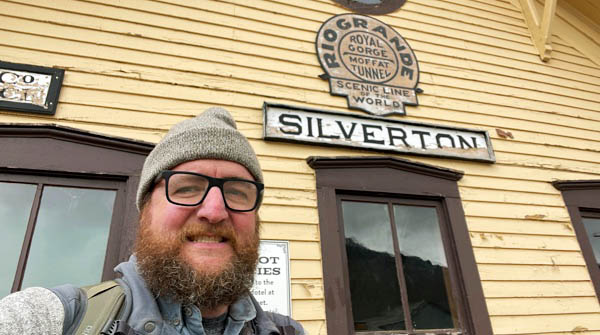
Silverton, Co / May 2023 / RWH
Links / Sources
- Durango & Silverton Narrow Gauge Railroad website
- Wikipedia article for Durango & Silverton
- ActionRoad.net Durango & Silverton pages
- Colorado Encyclopedia Durango & Silverton page
- Durango.com Durango & Silverton page


 In 1997, Bradshaw sold the successful Durango & Silverton Narrow Gauge Railroad to a new owner, who a year later sold it again to American Heritage Railways — then based in Florida. Since then, with Allen Harper as CEO, AHR headquarters have moved to Durango, and the company also owns and operates the
In 1997, Bradshaw sold the successful Durango & Silverton Narrow Gauge Railroad to a new owner, who a year later sold it again to American Heritage Railways — then based in Florida. Since then, with Allen Harper as CEO, AHR headquarters have moved to Durango, and the company also owns and operates the 


